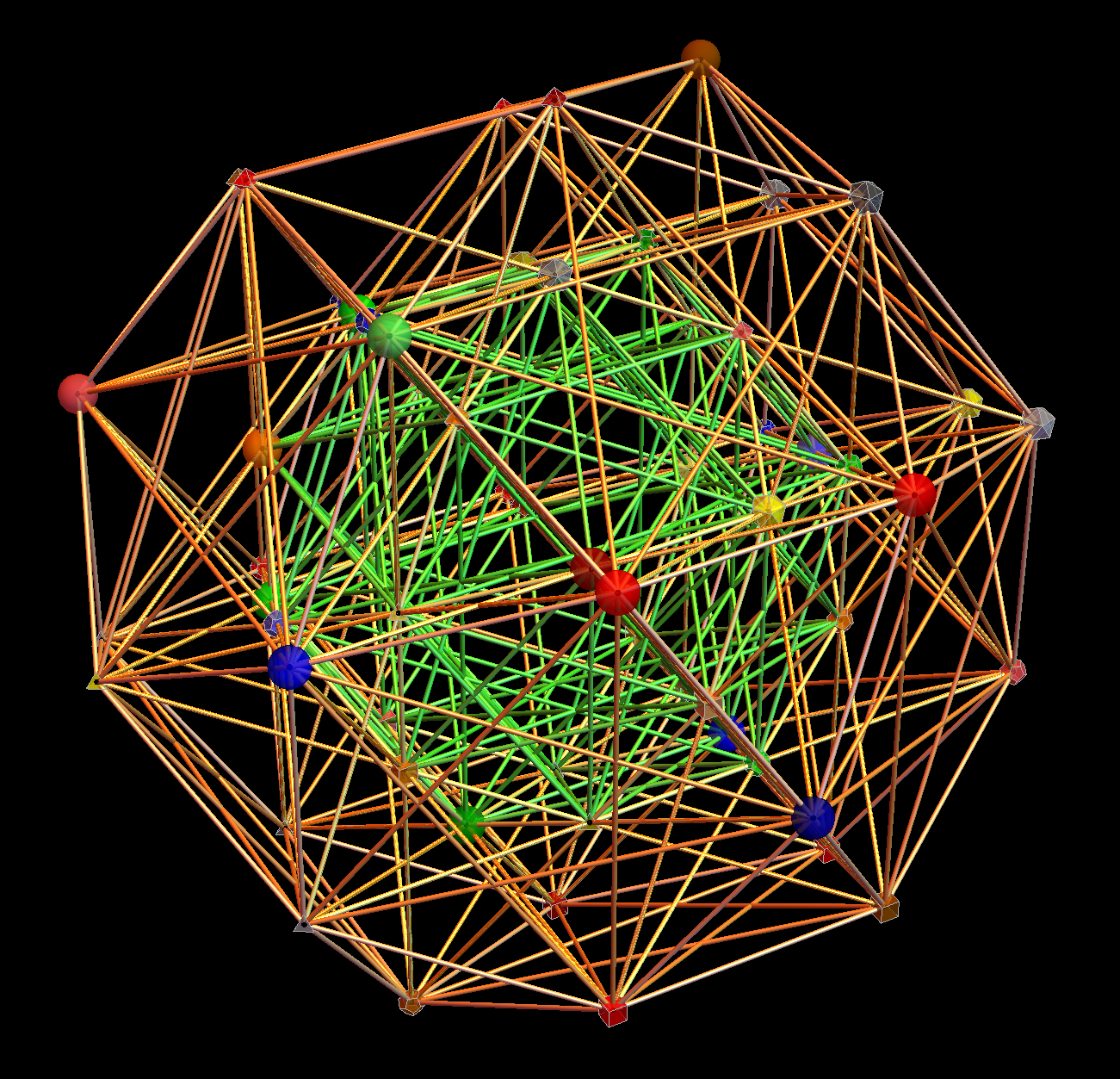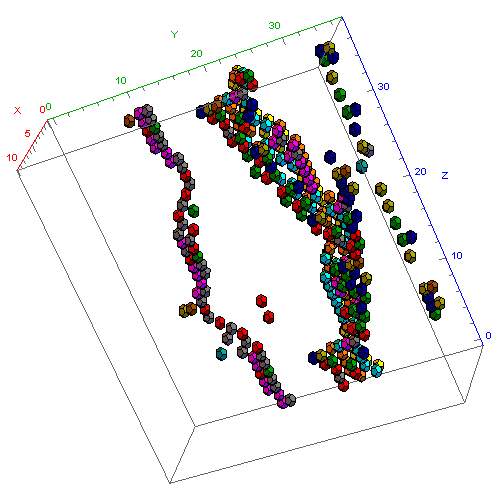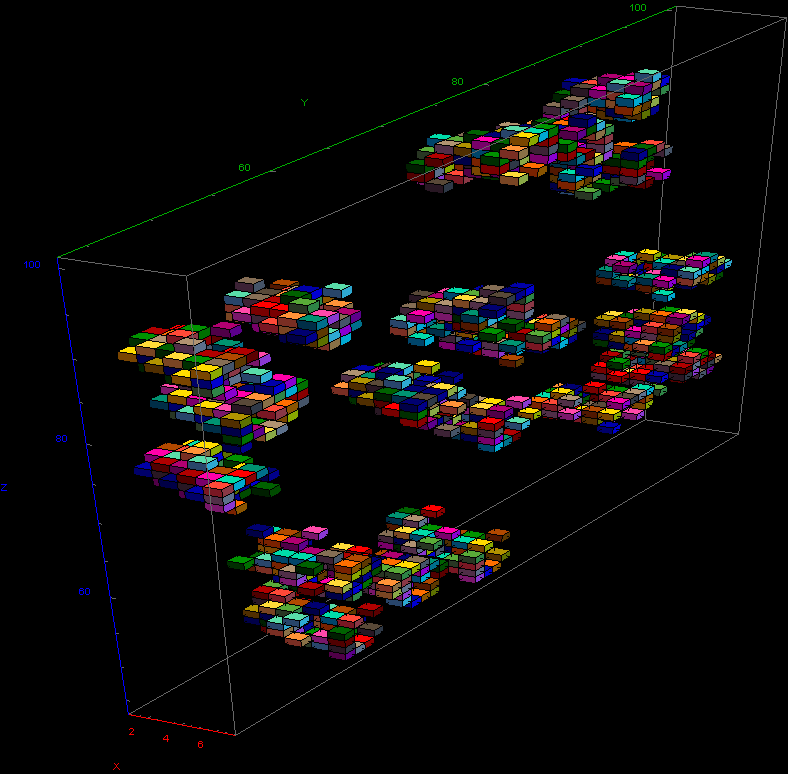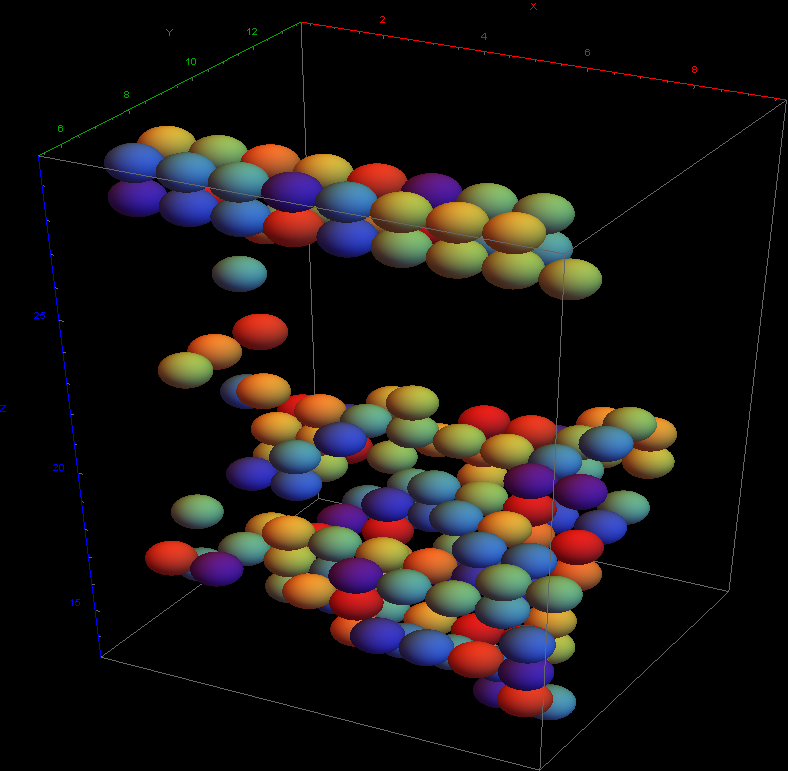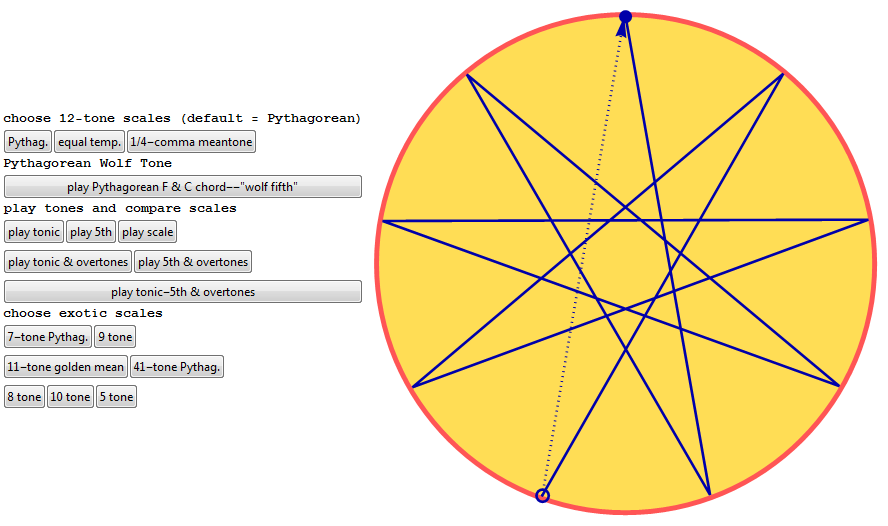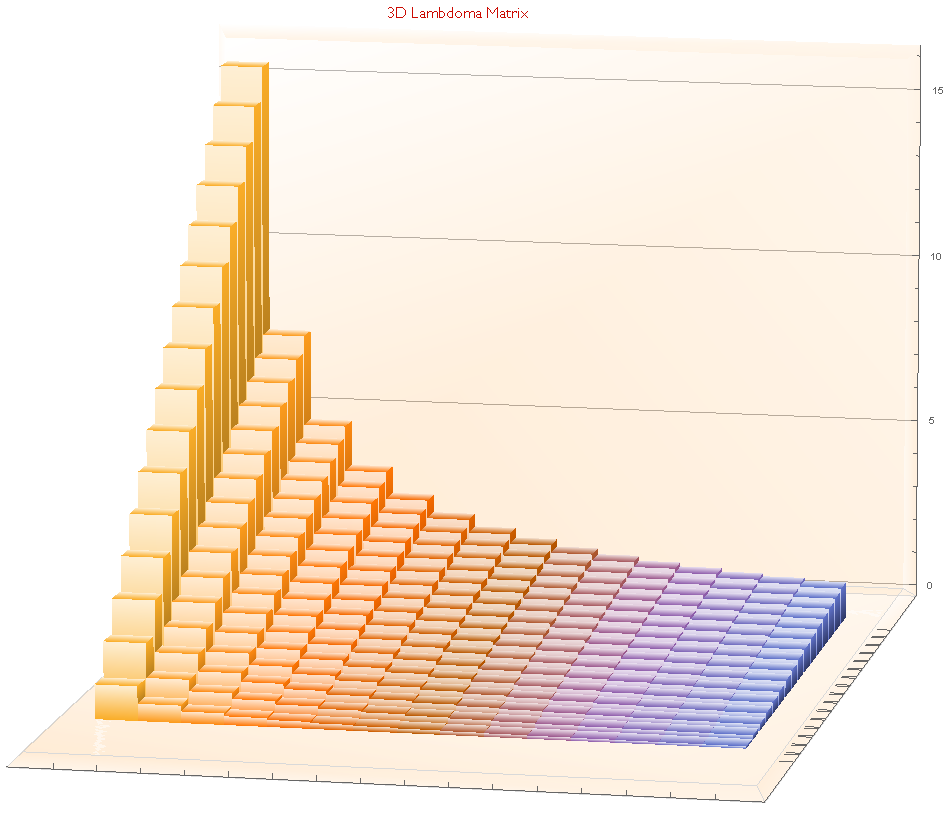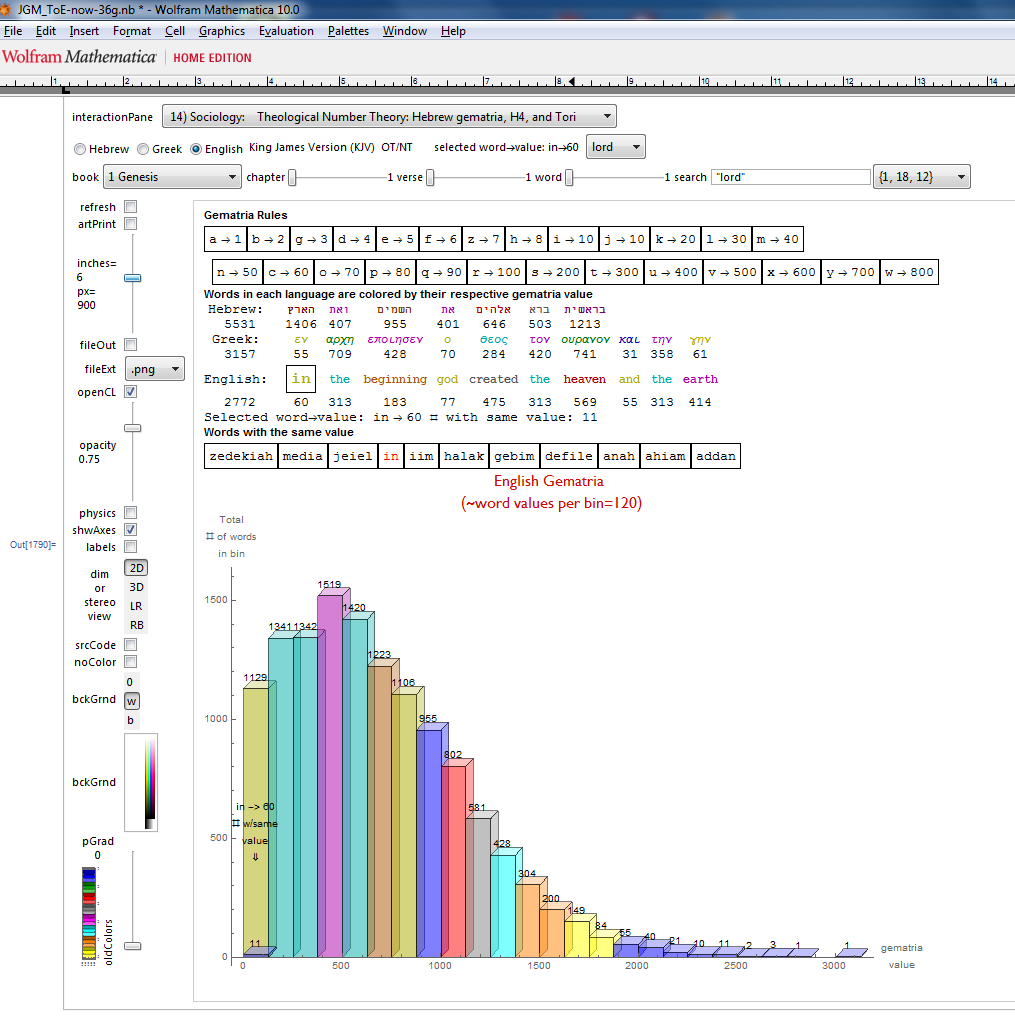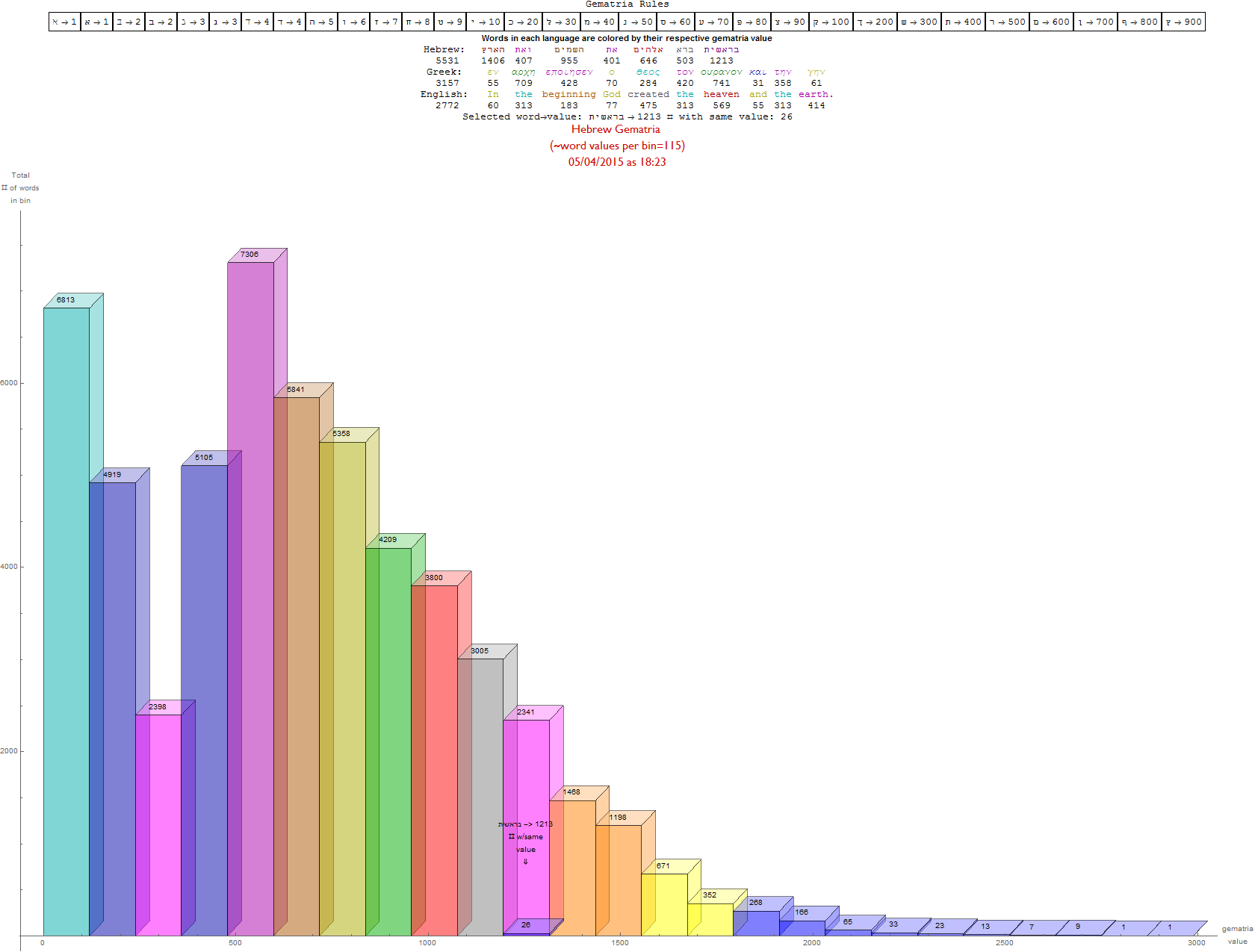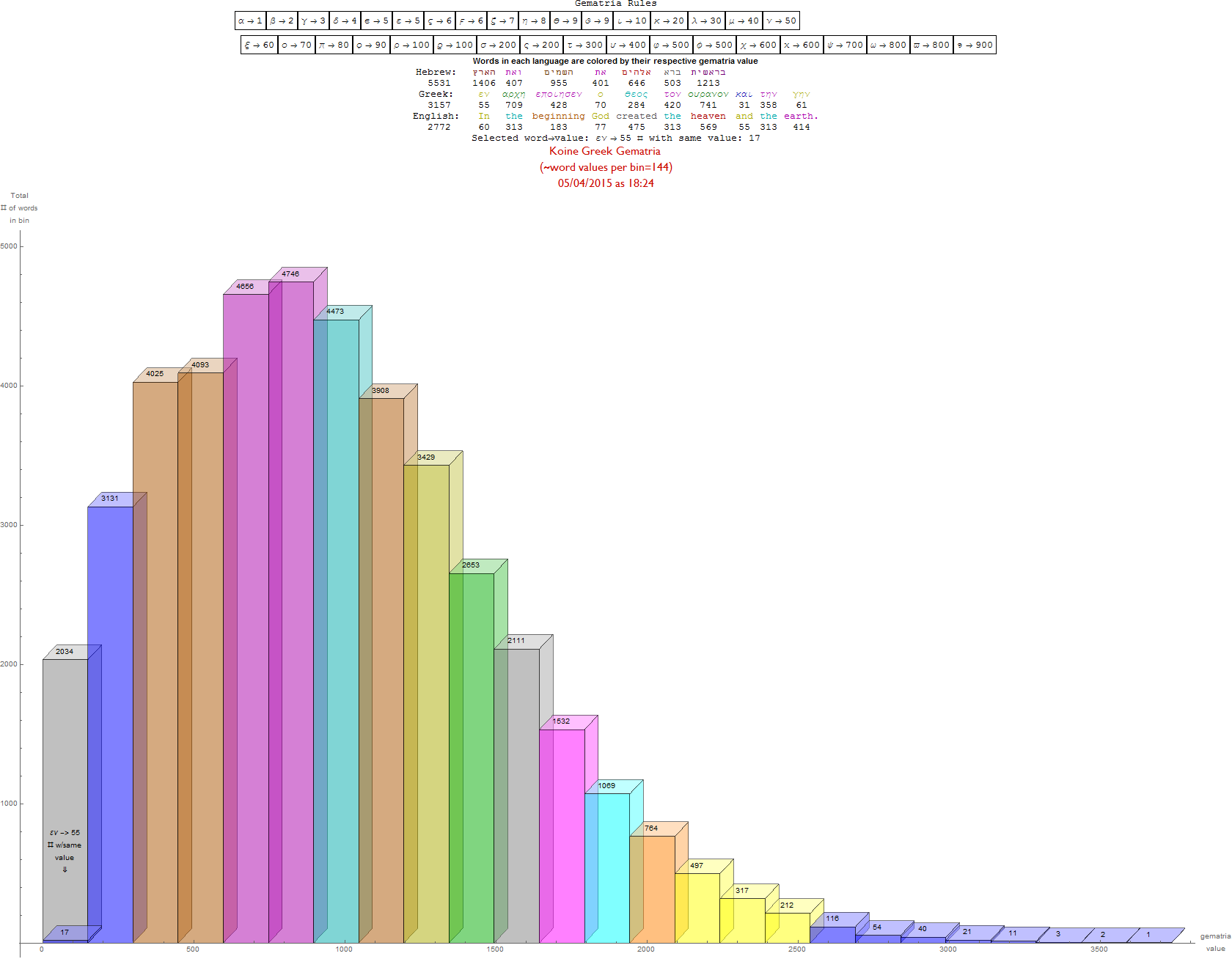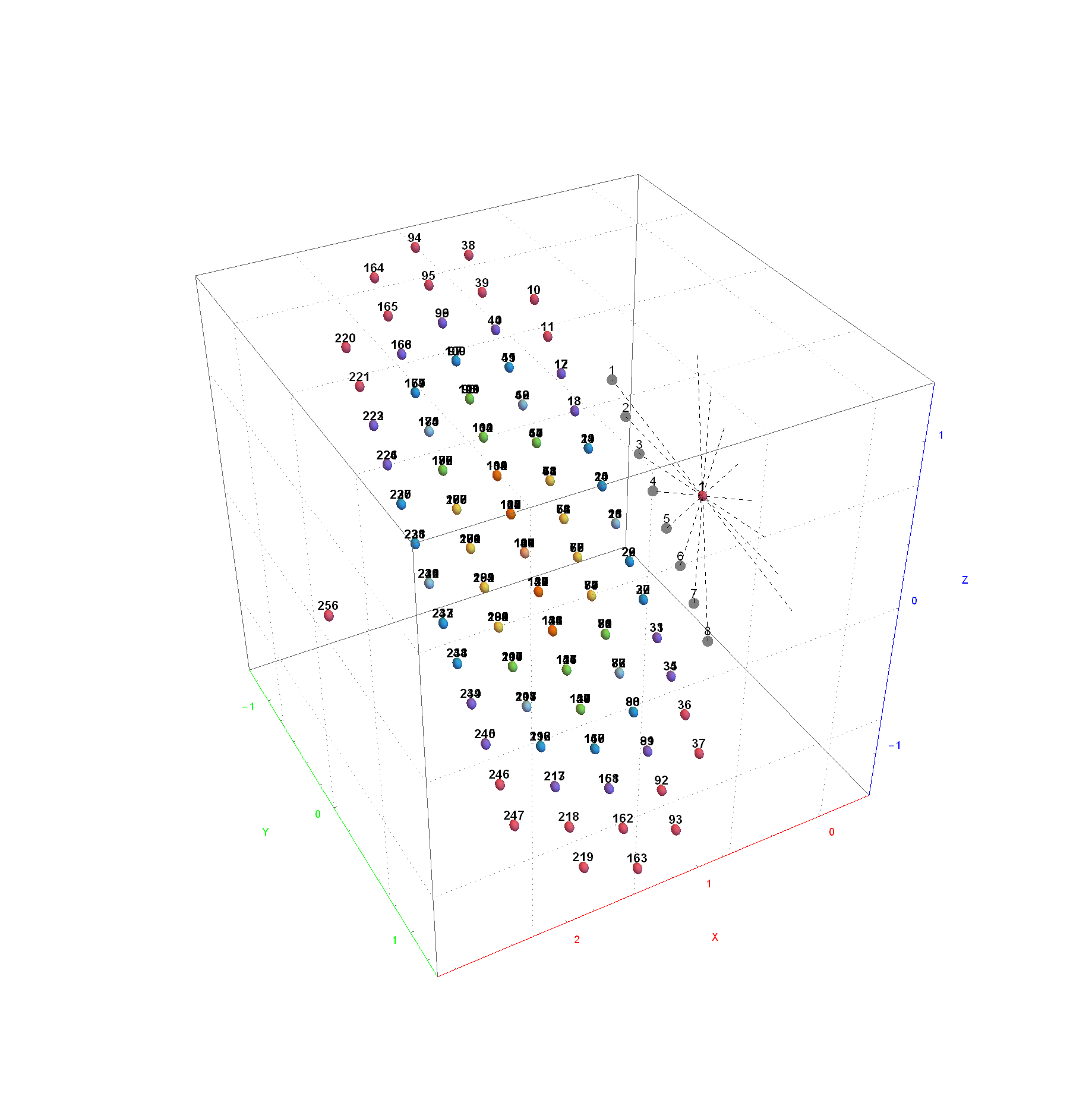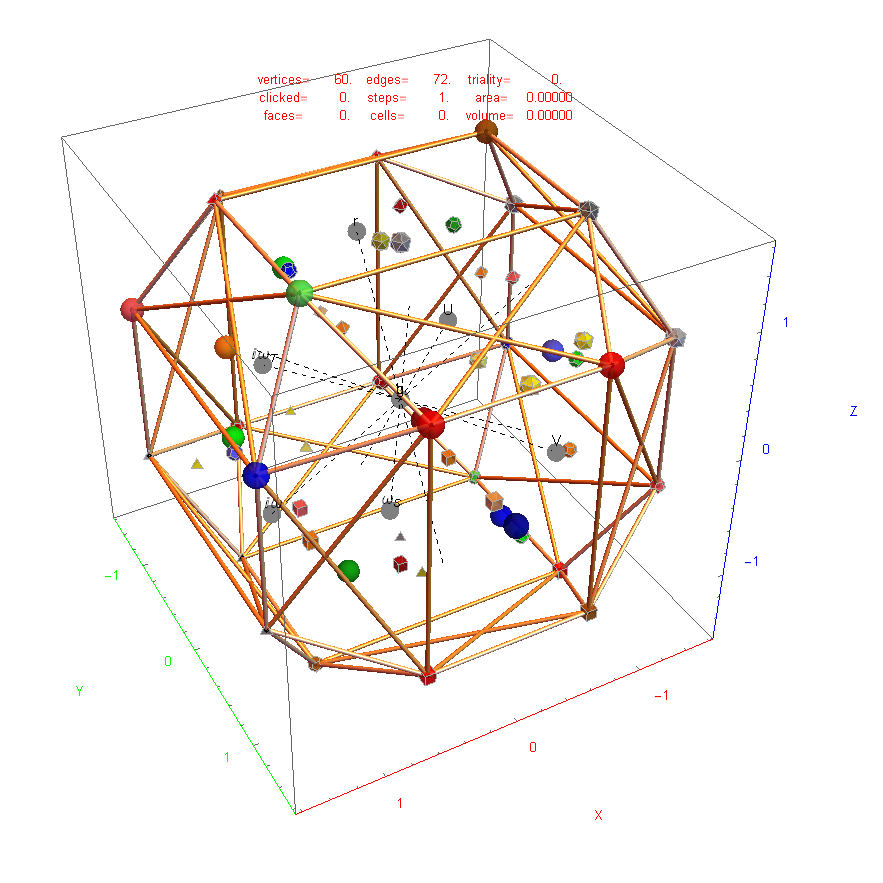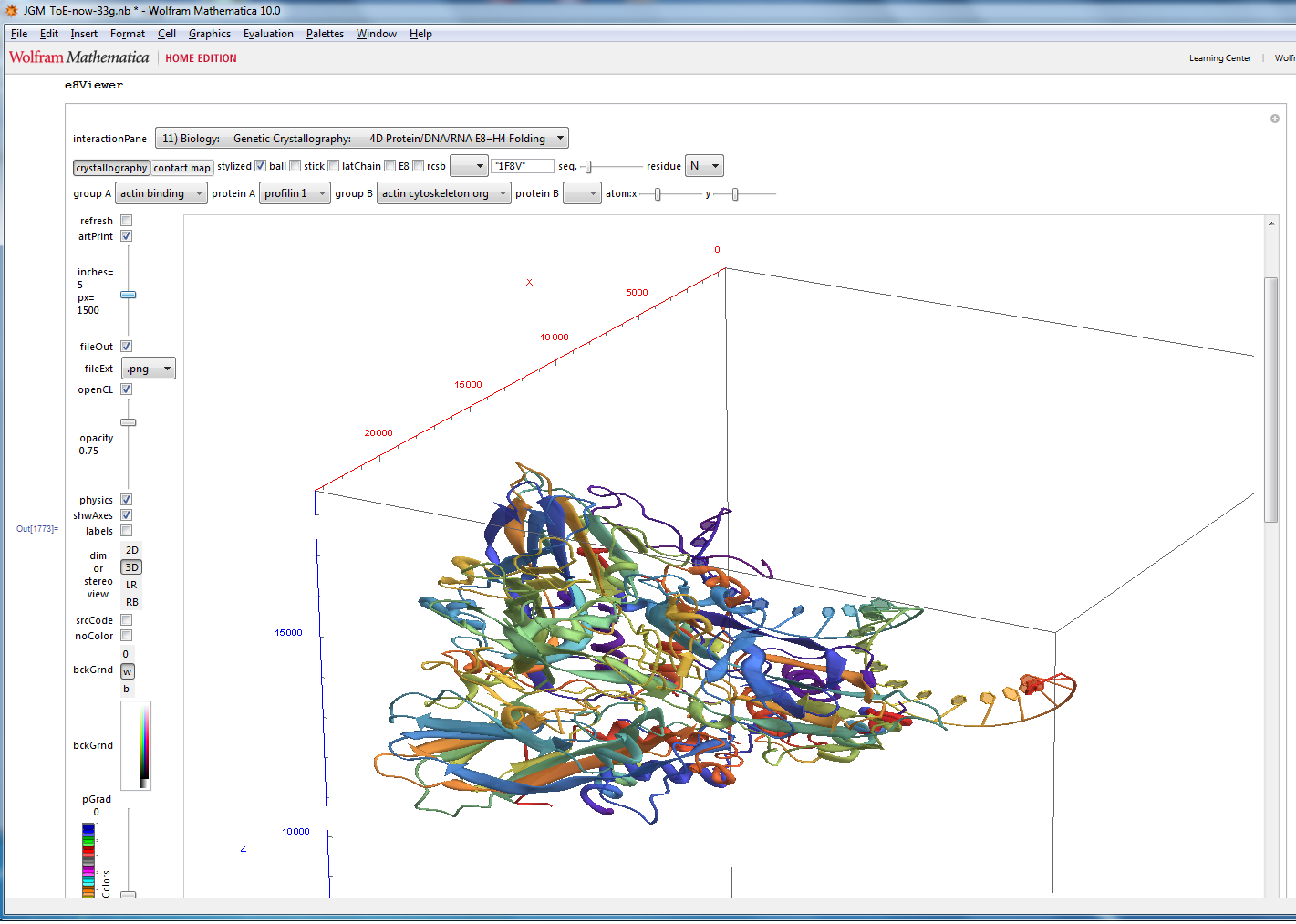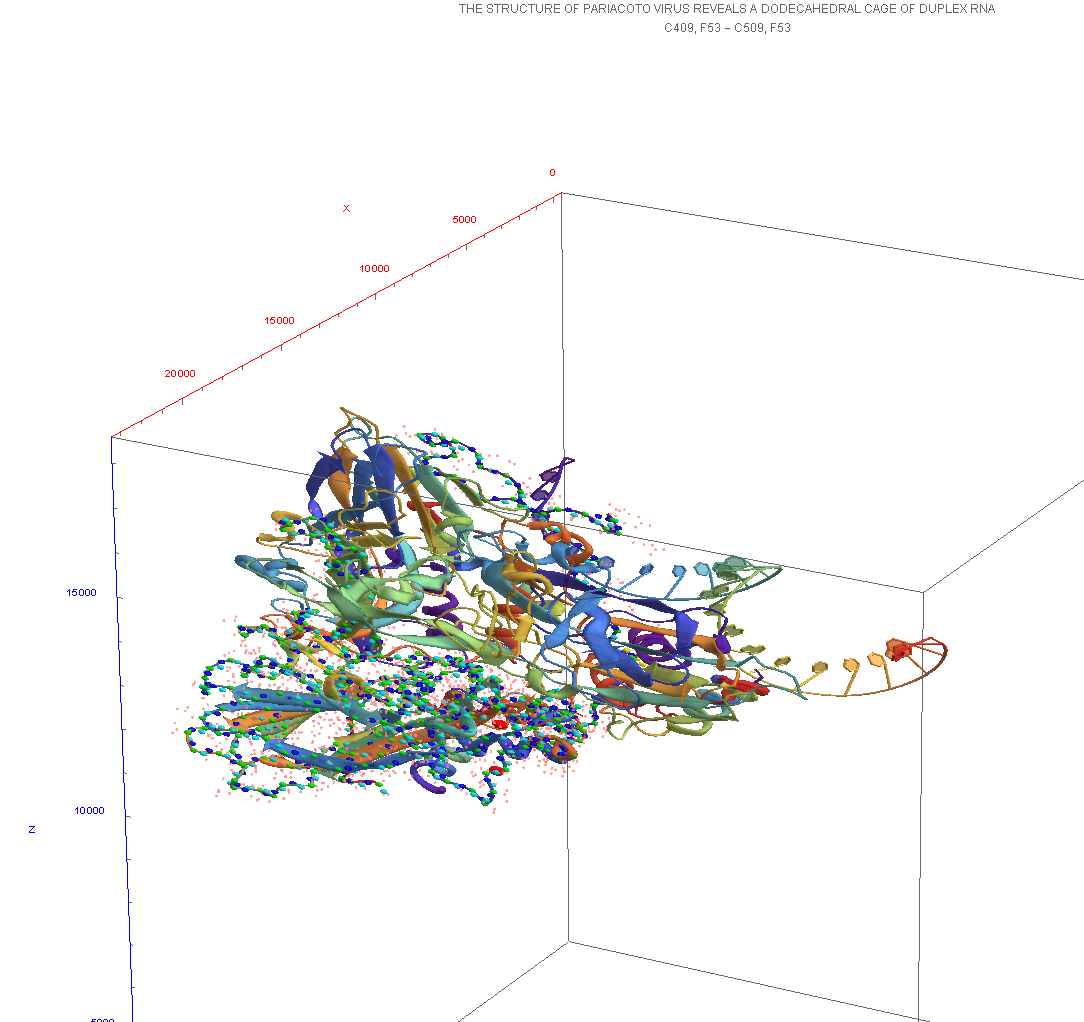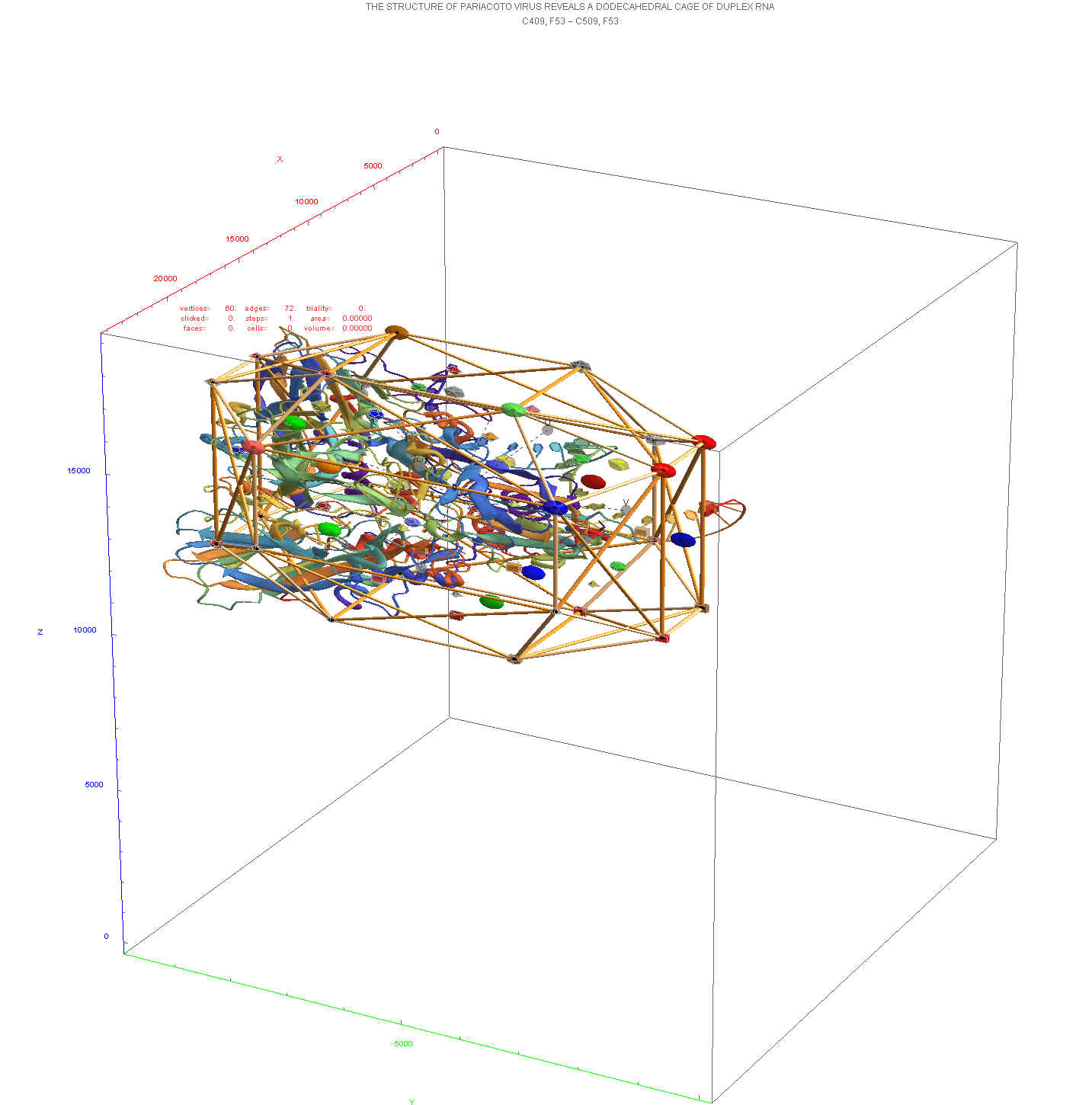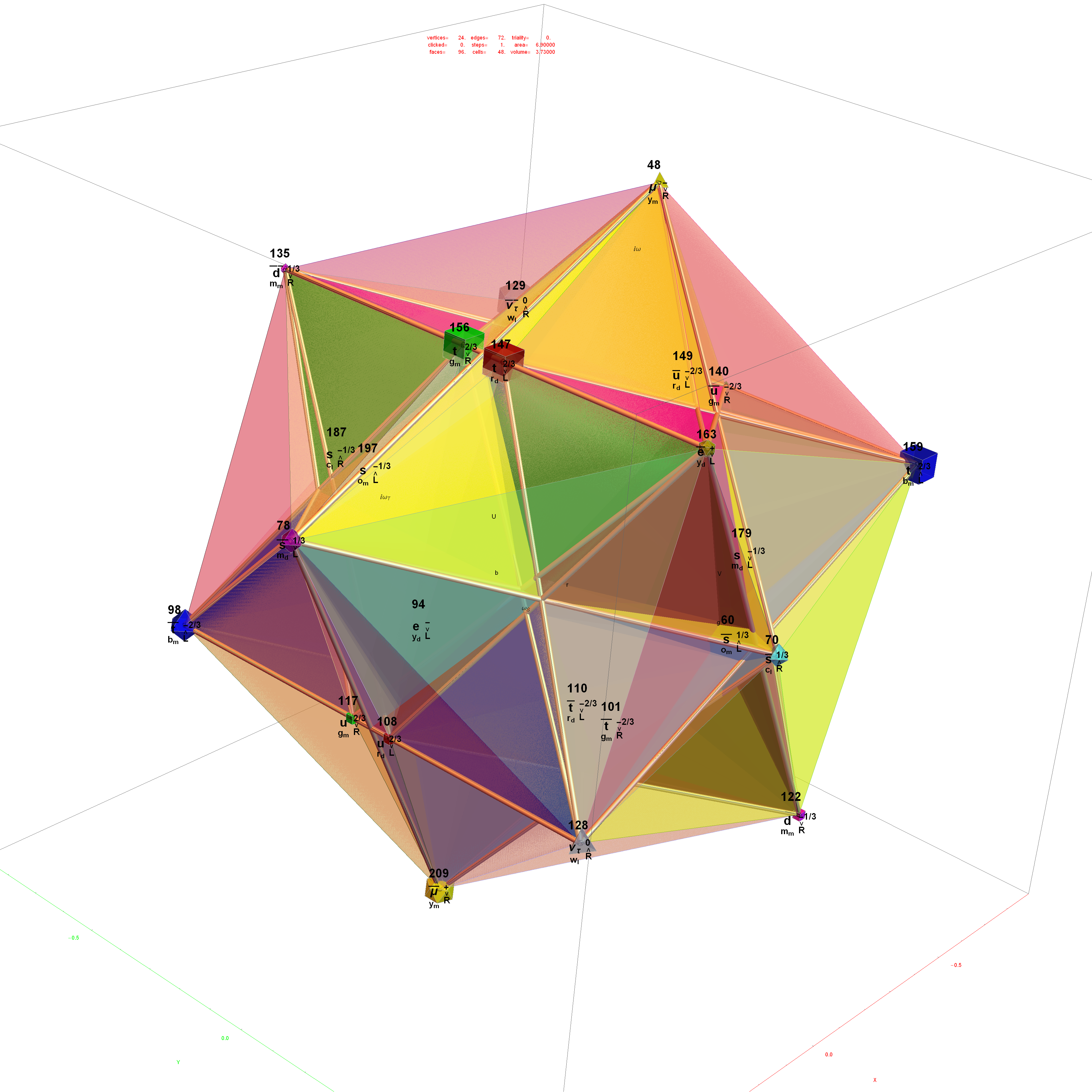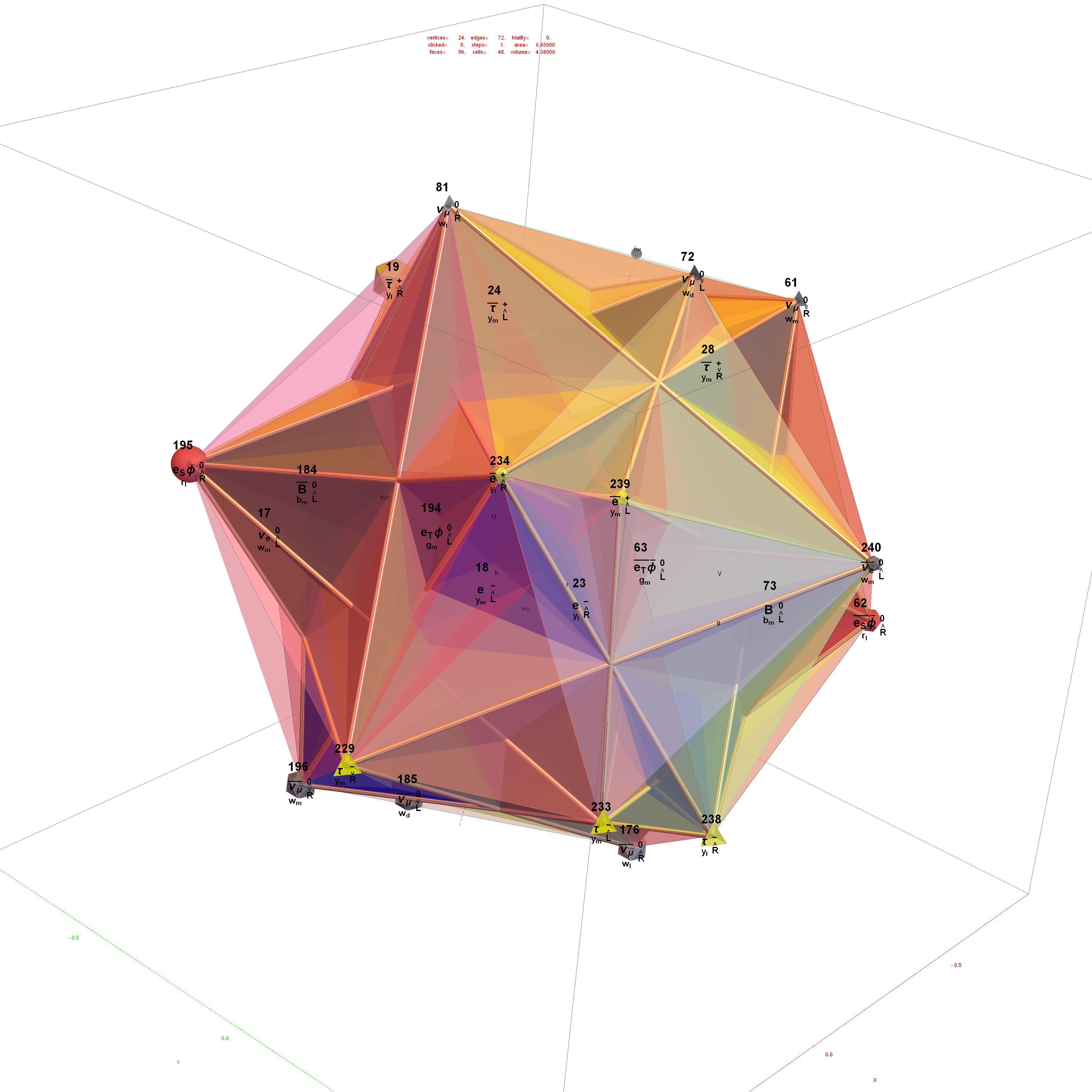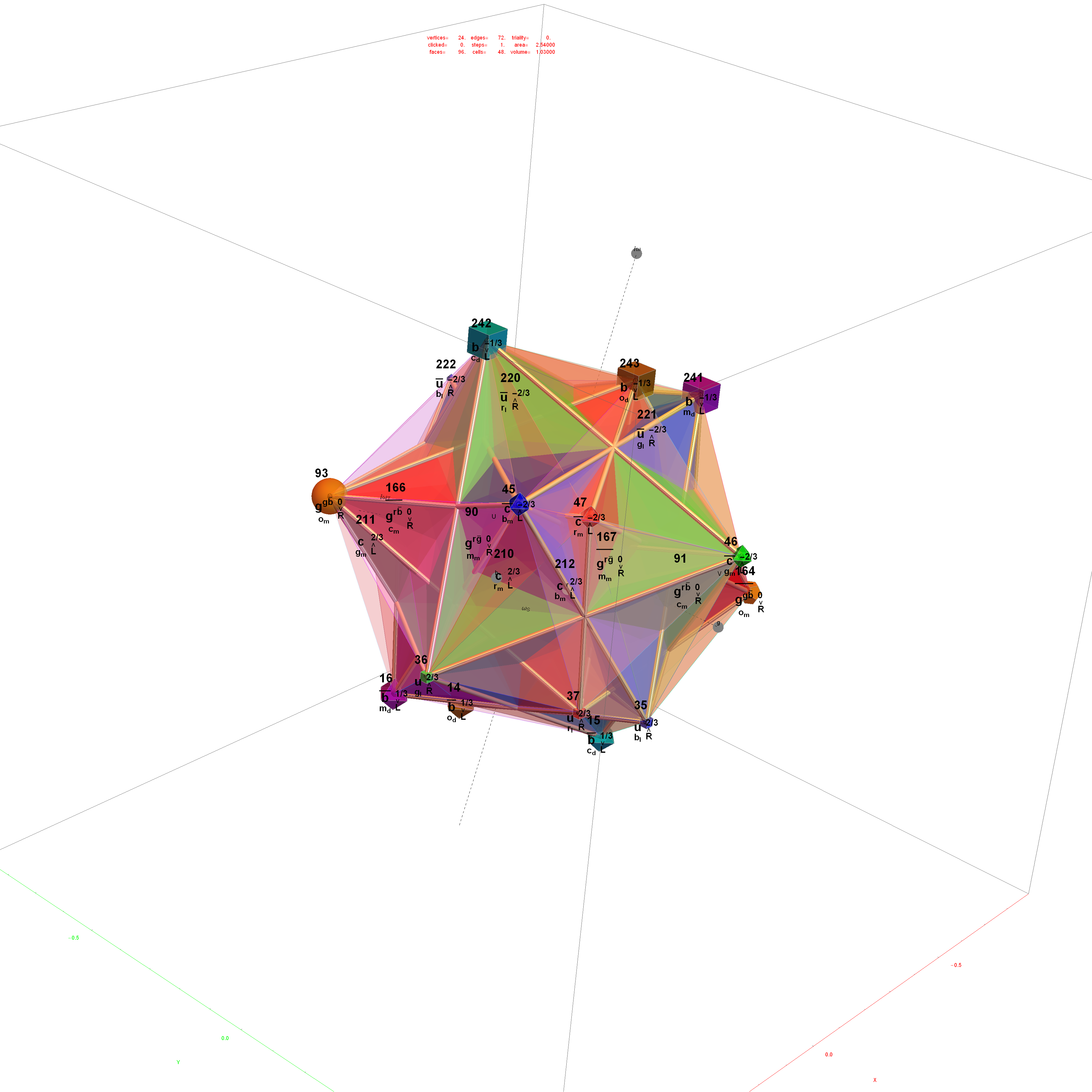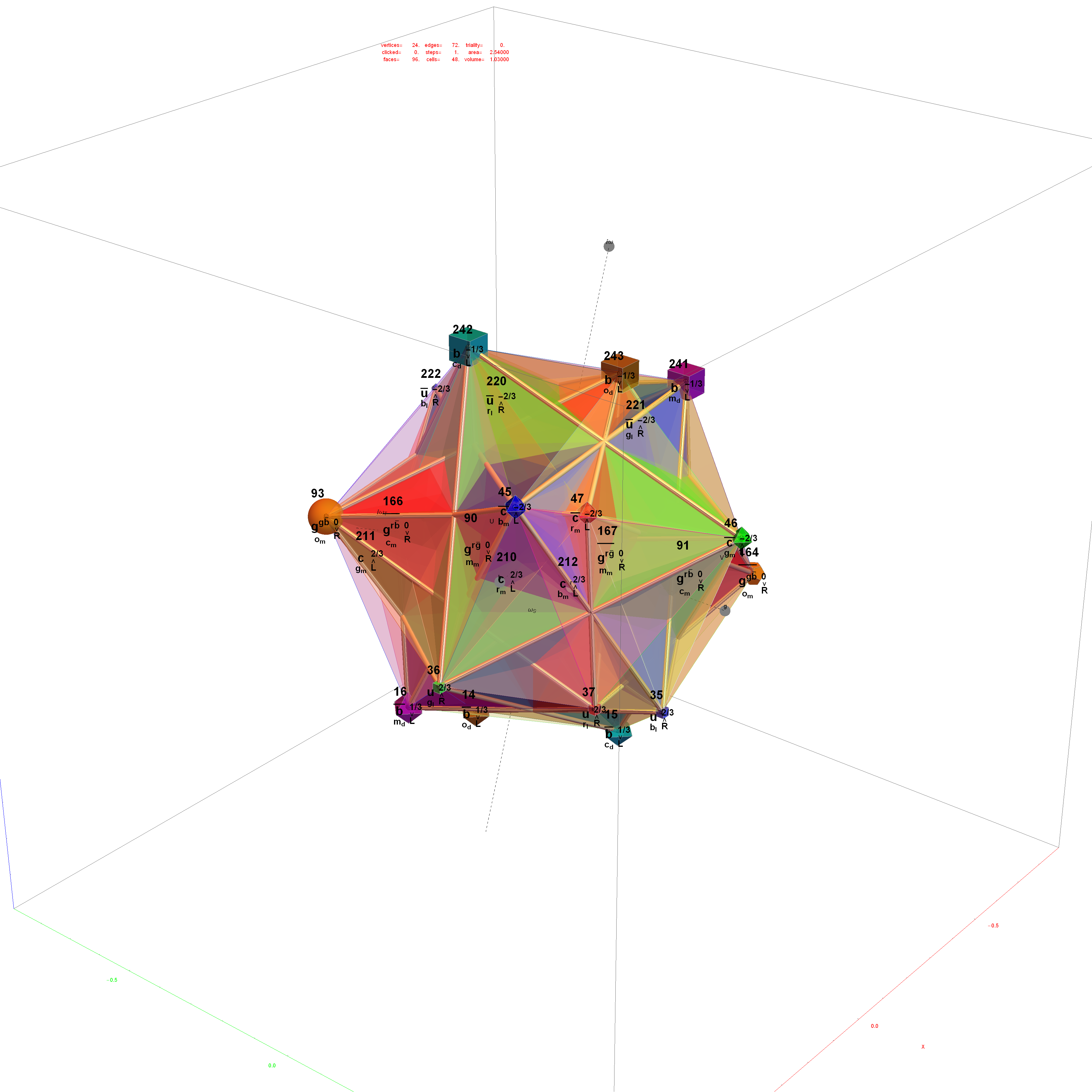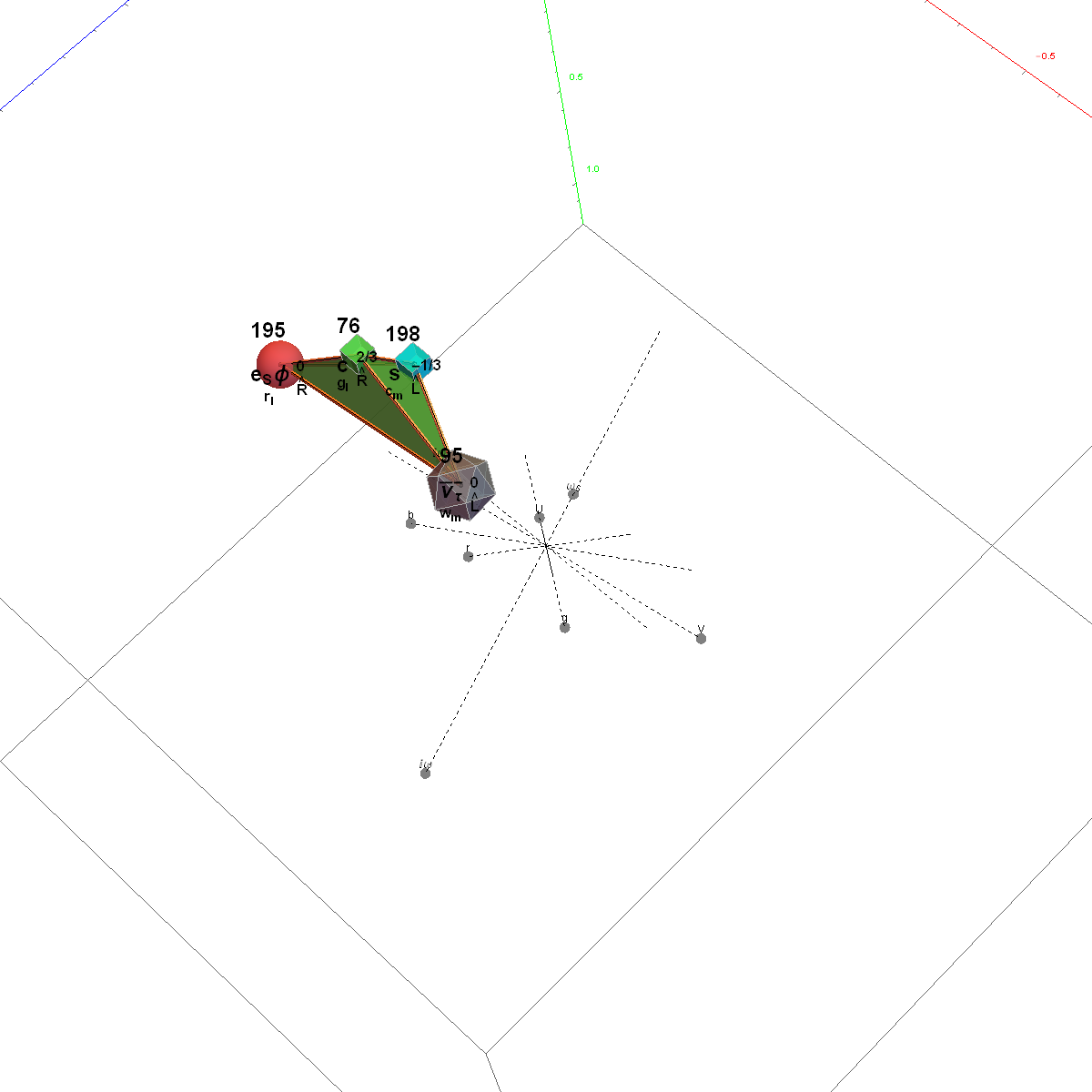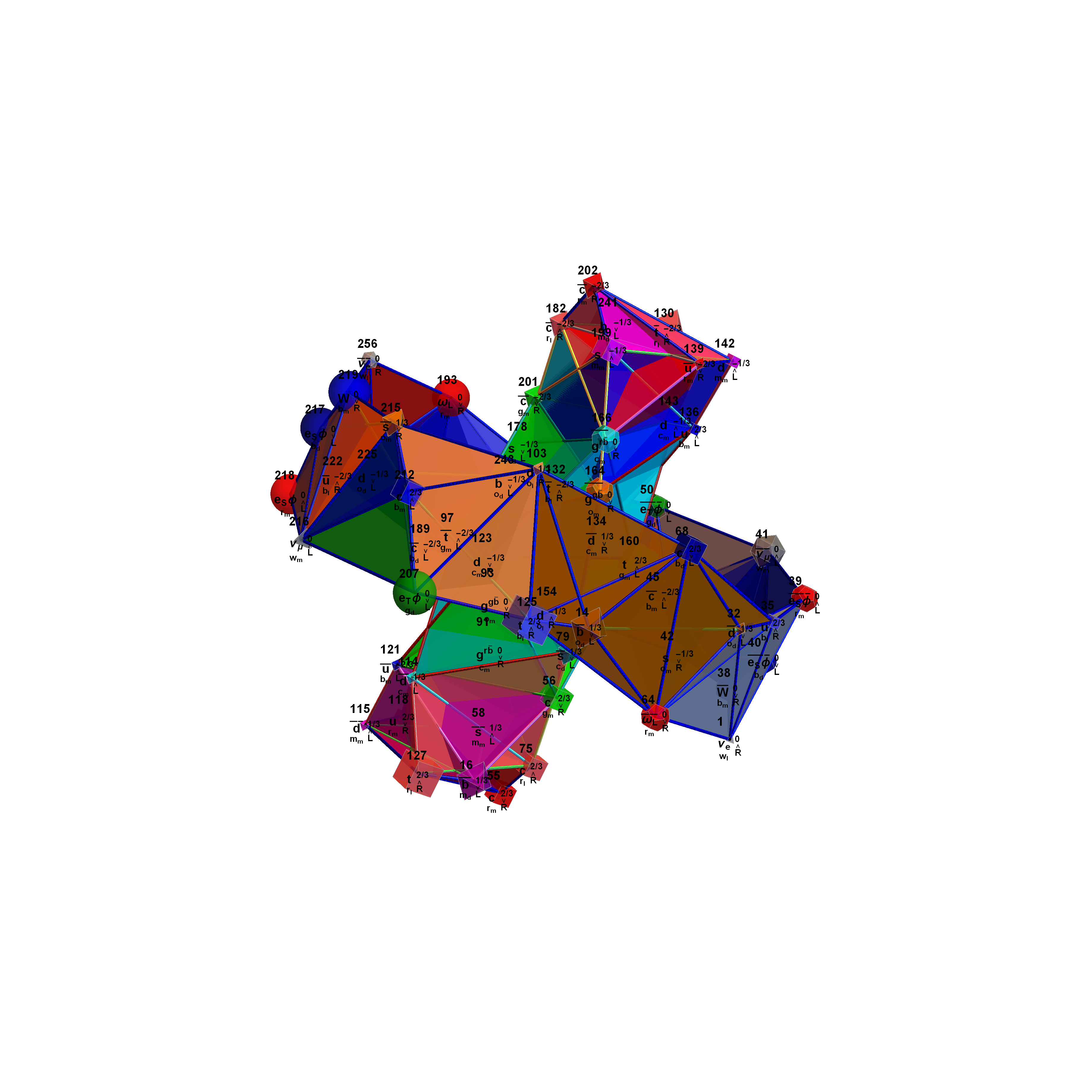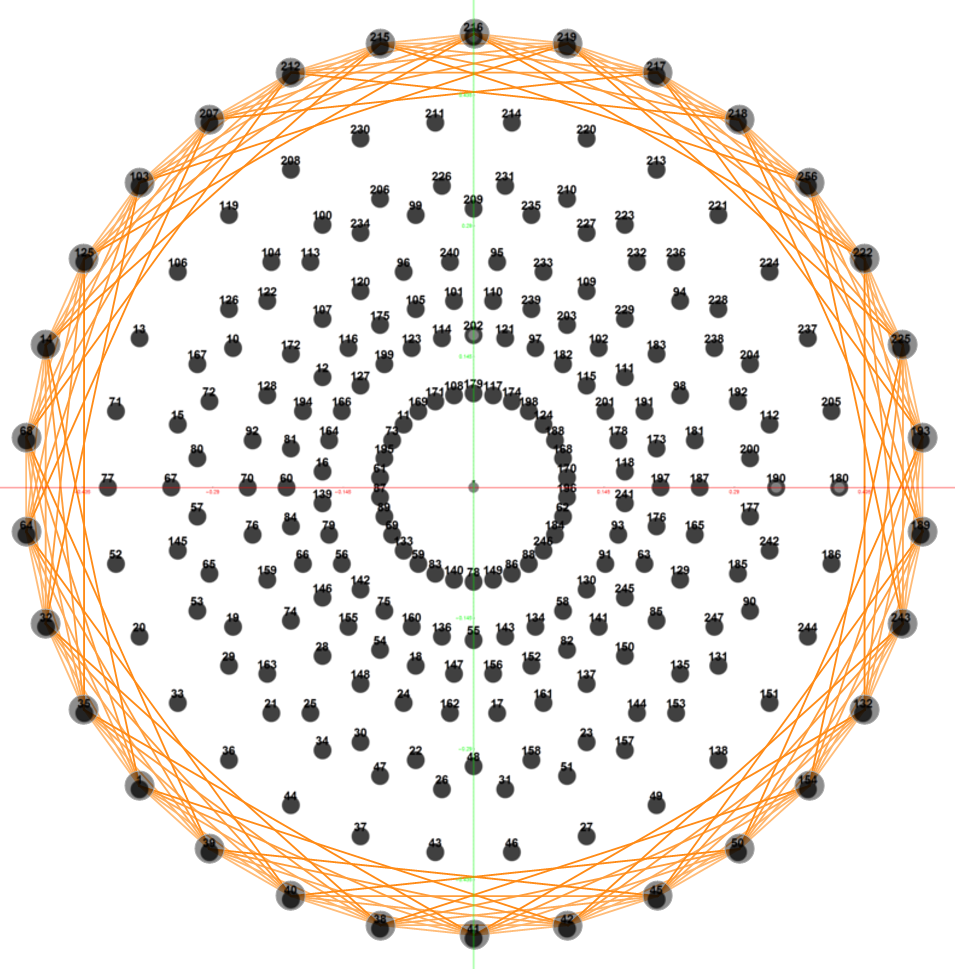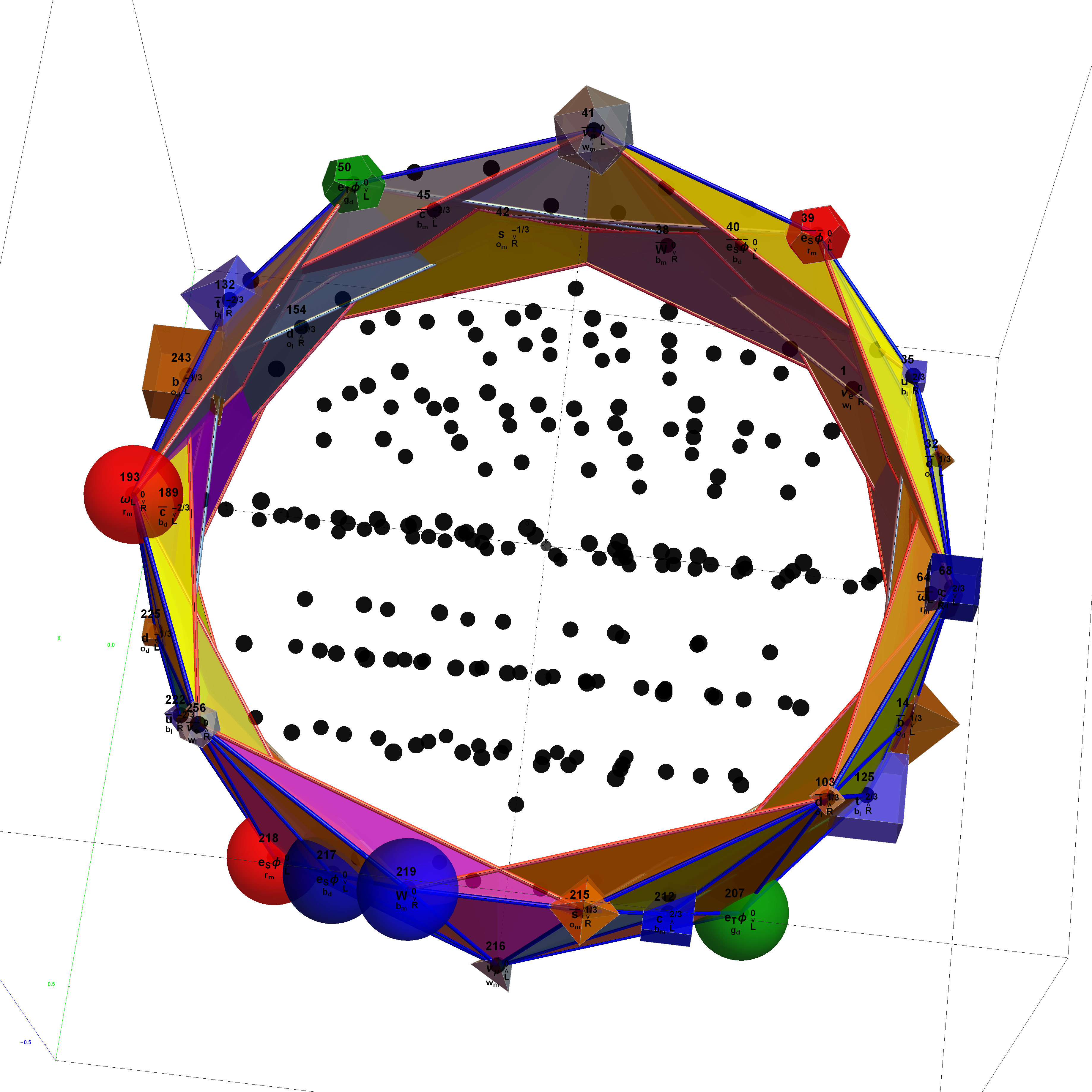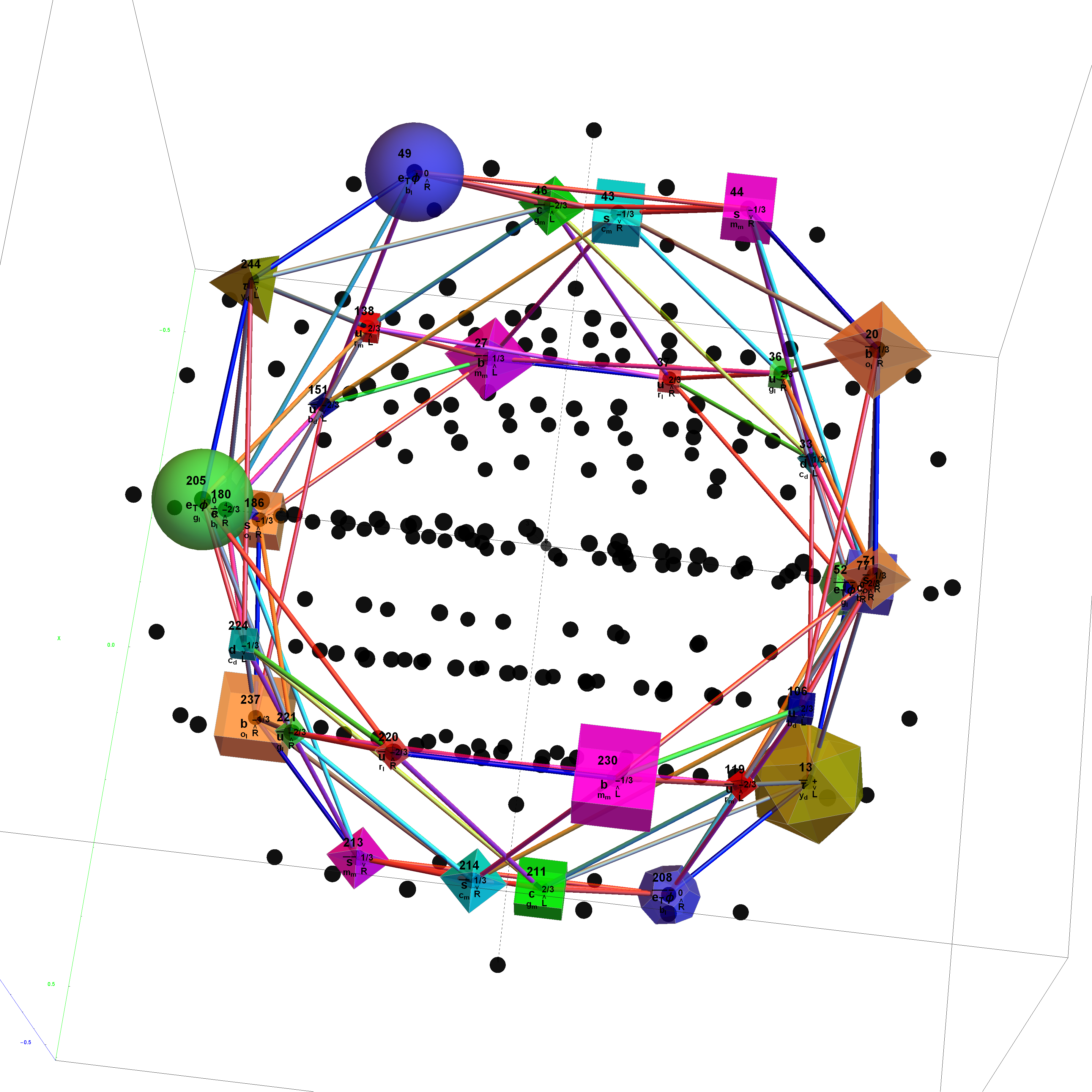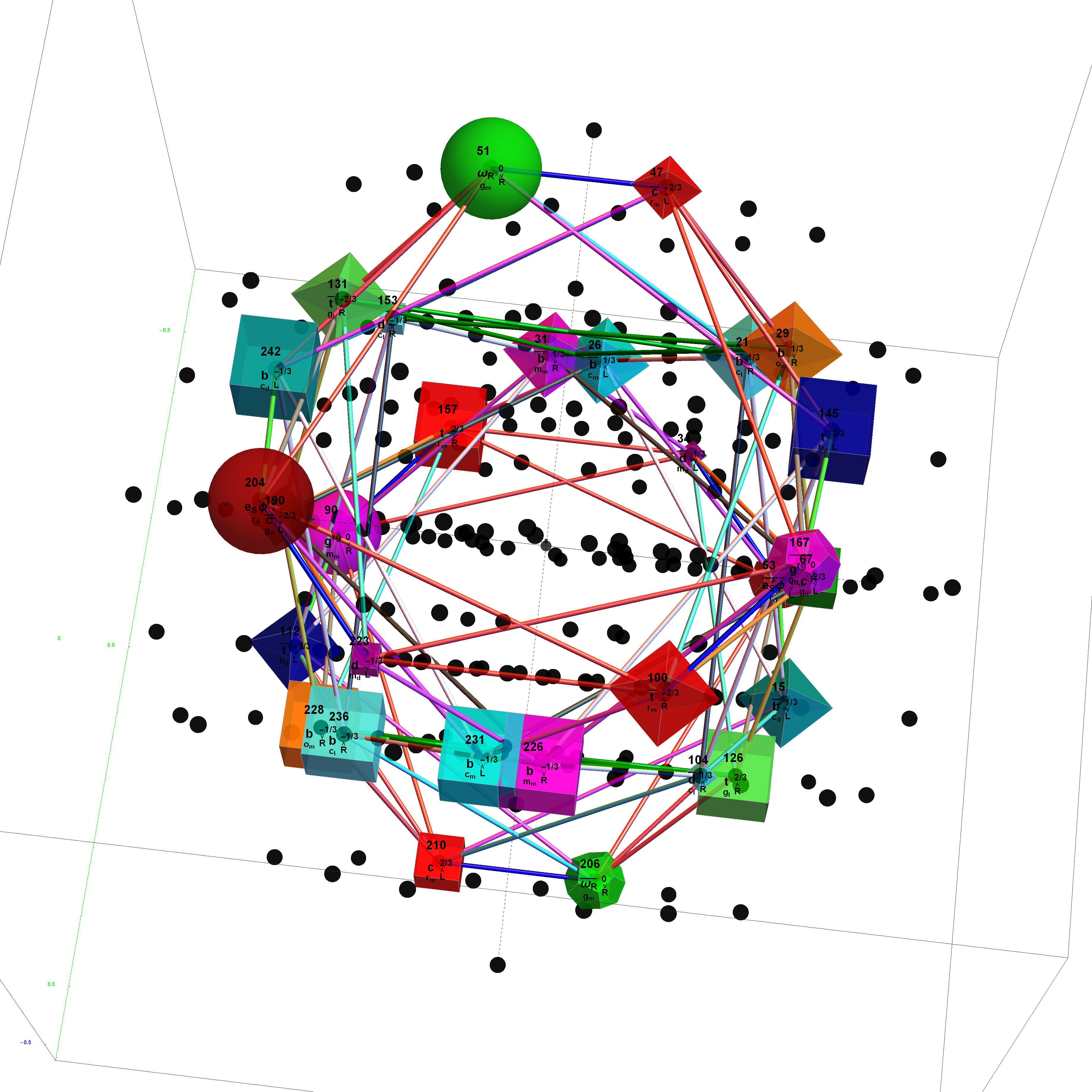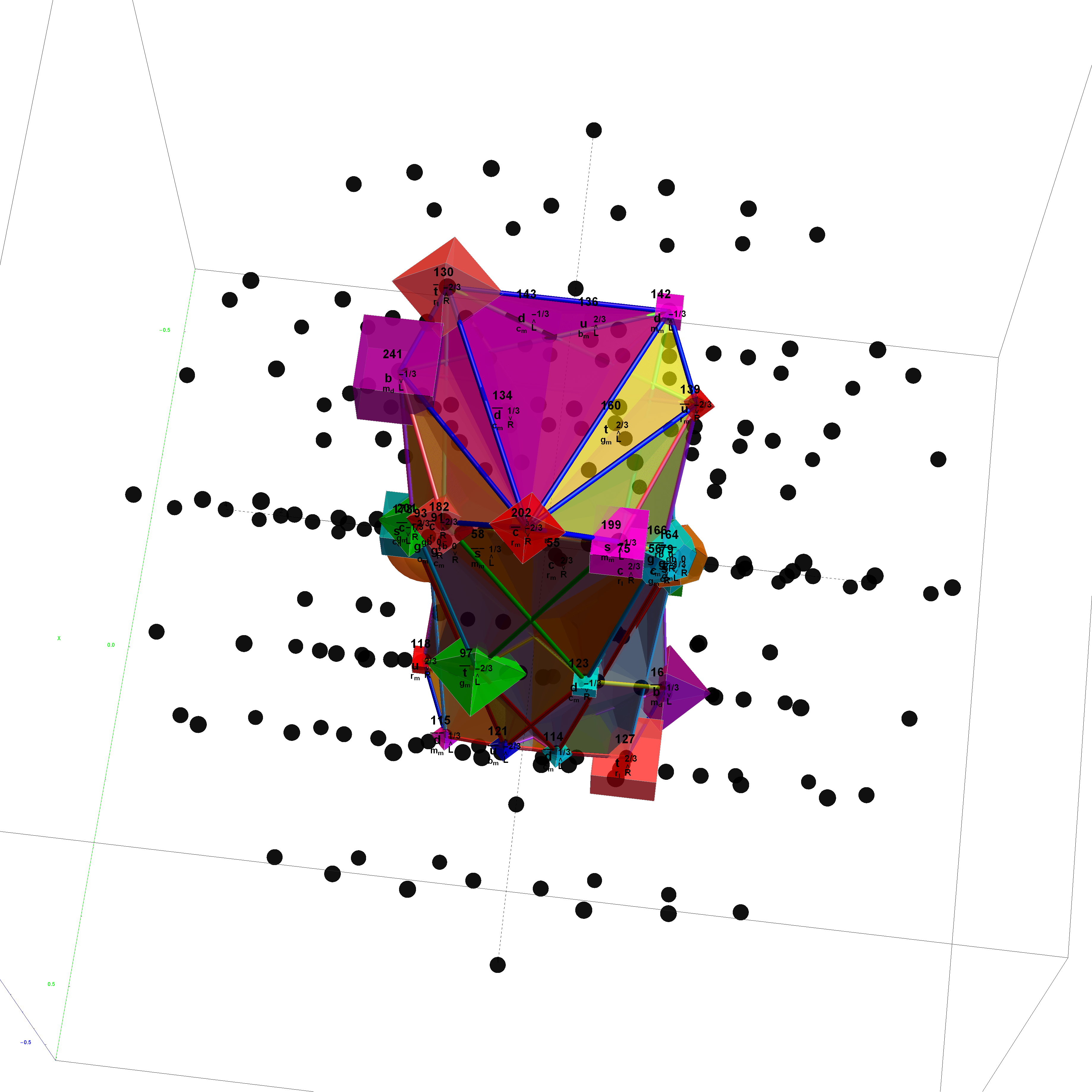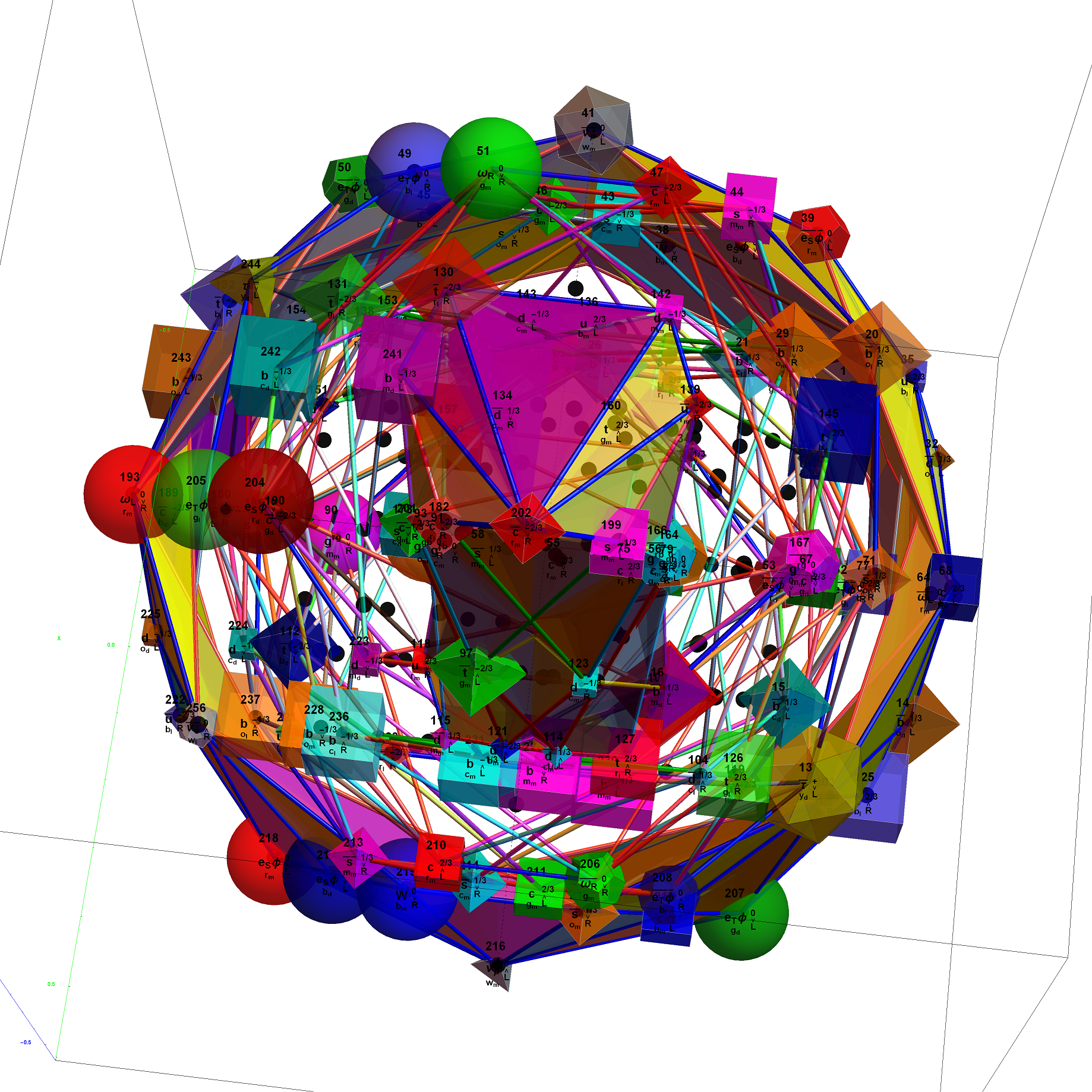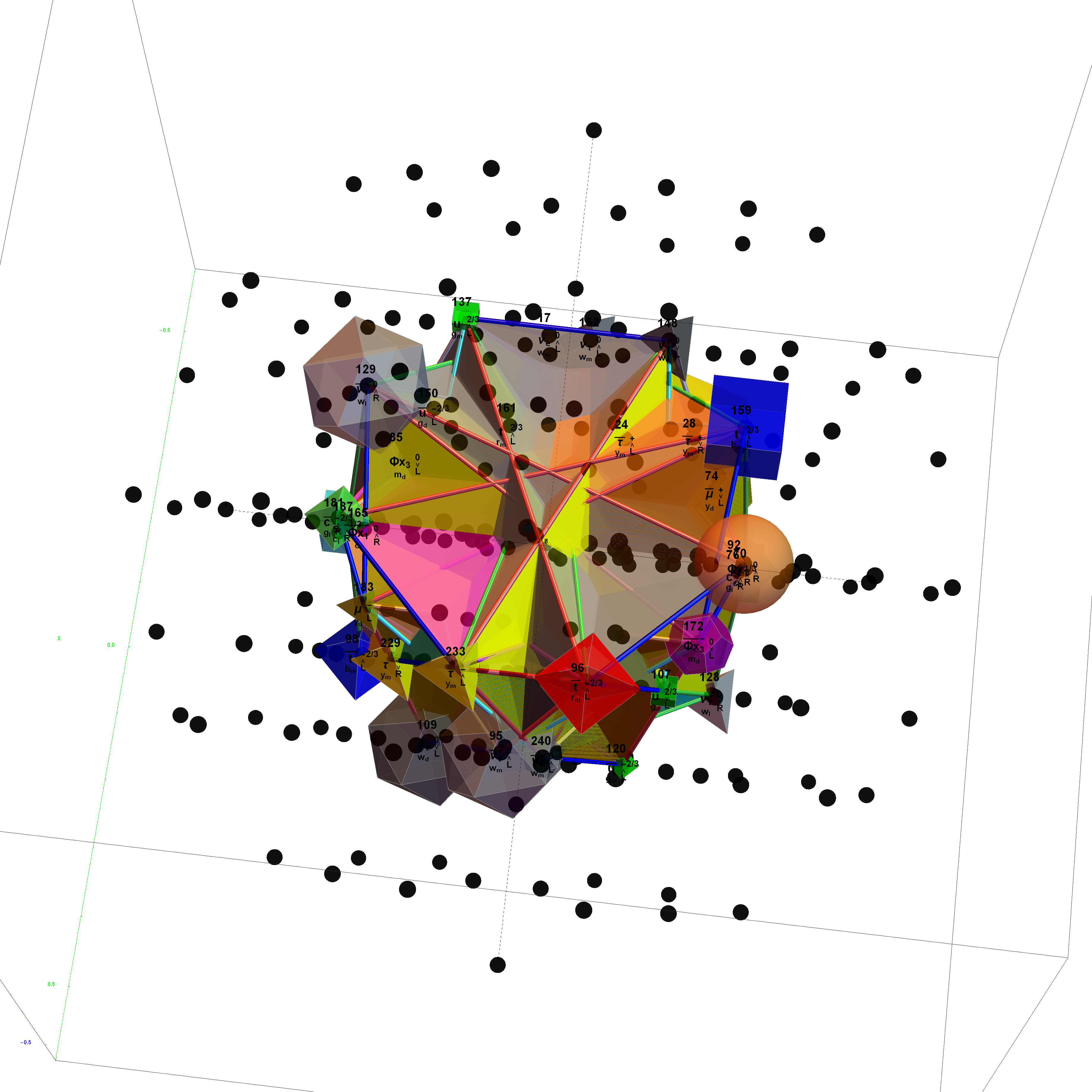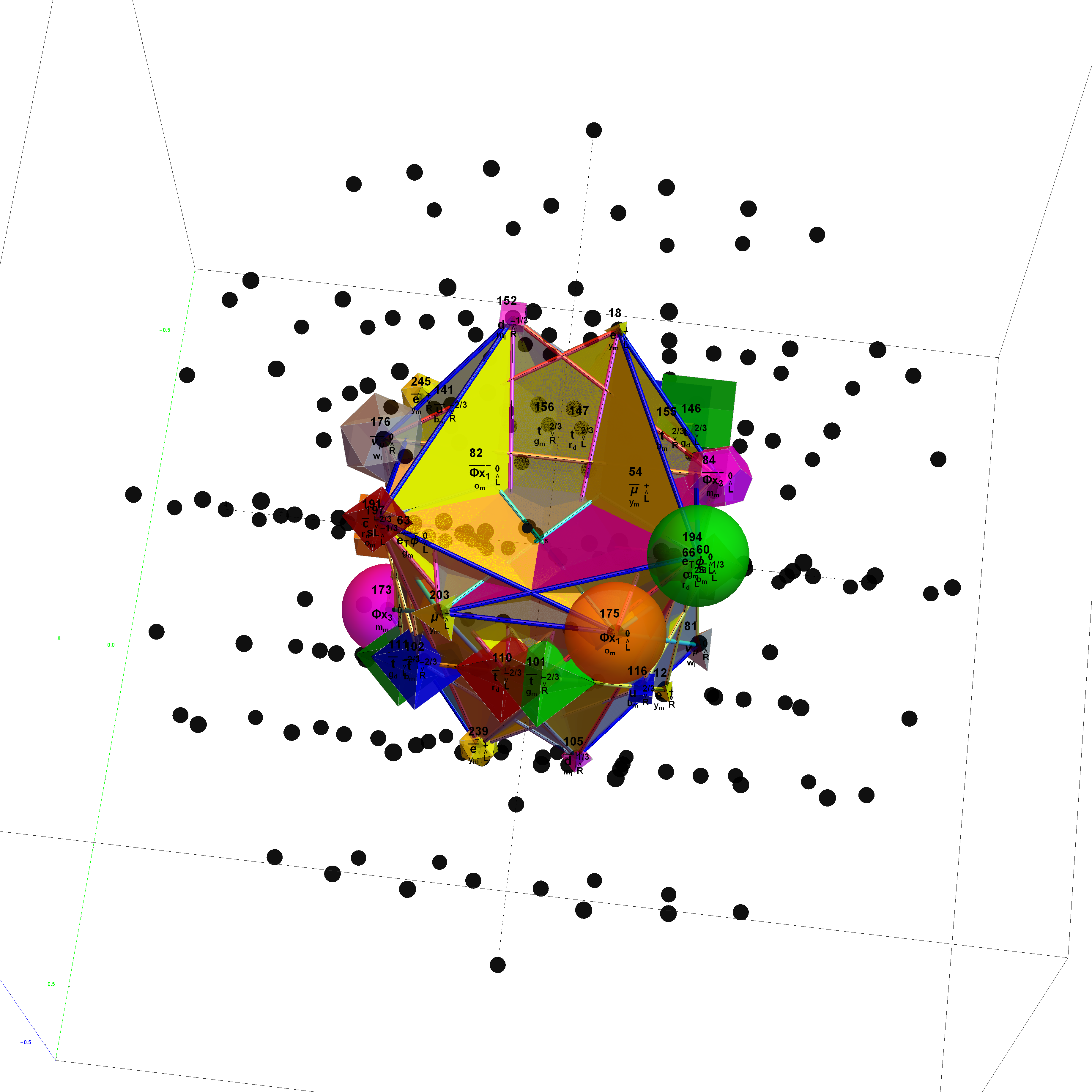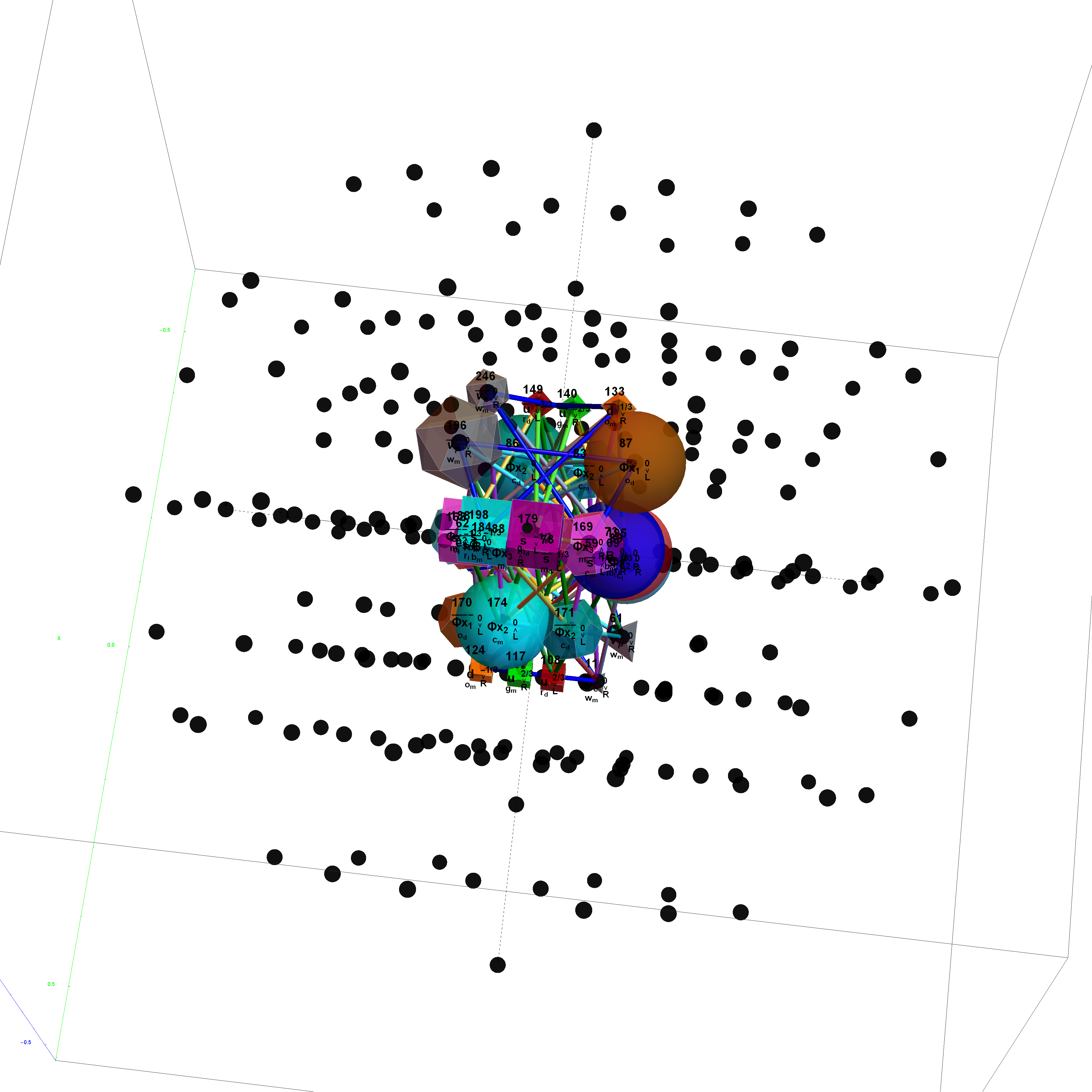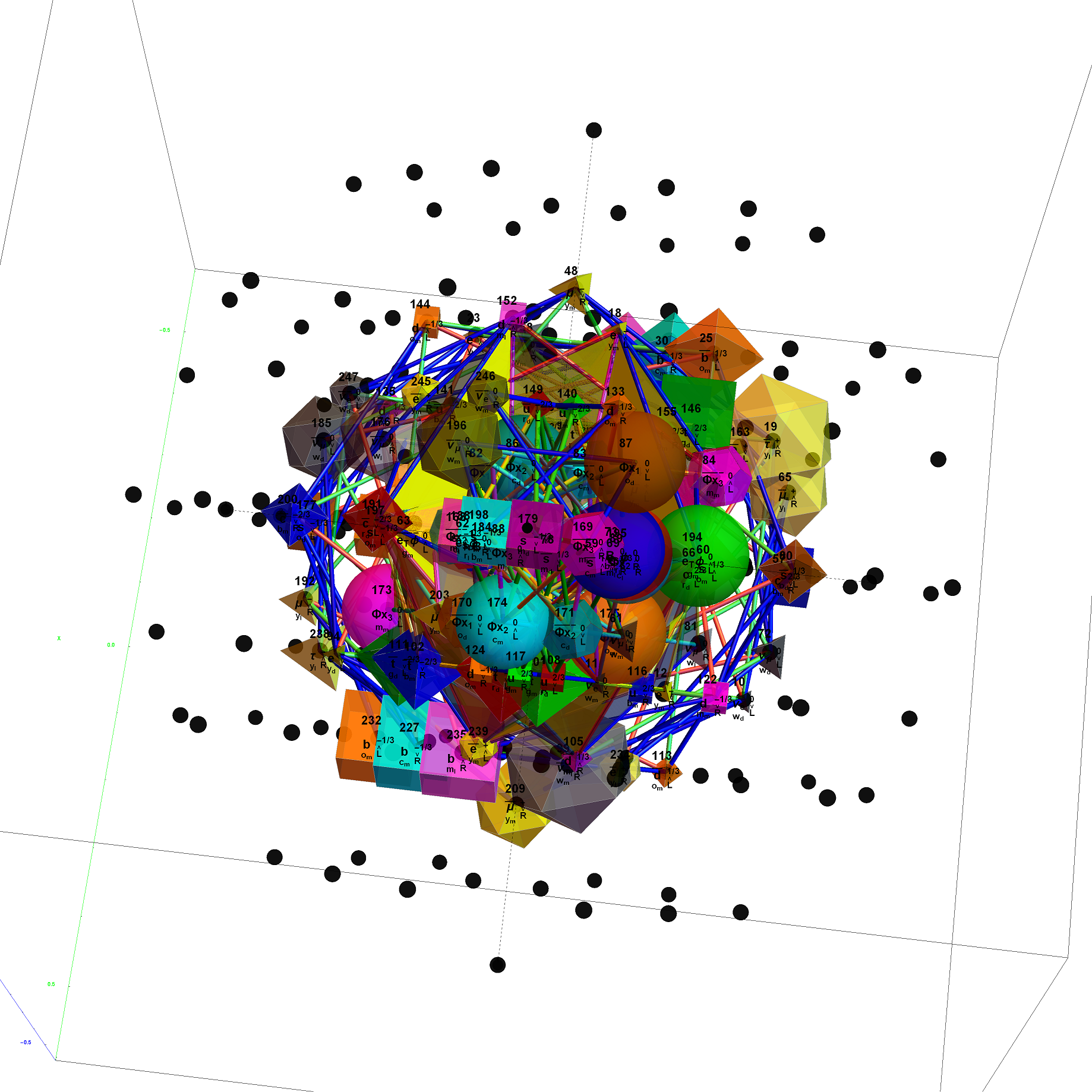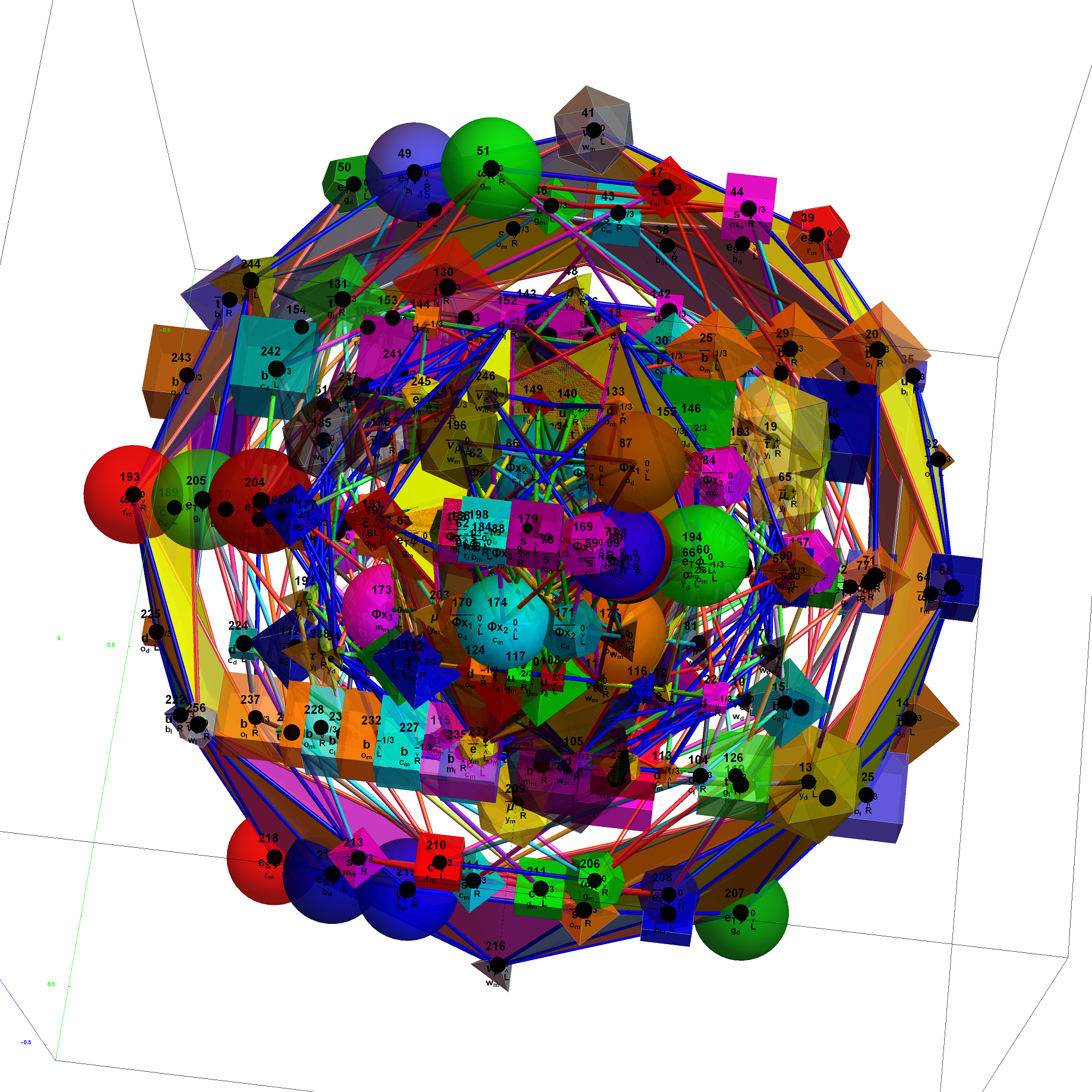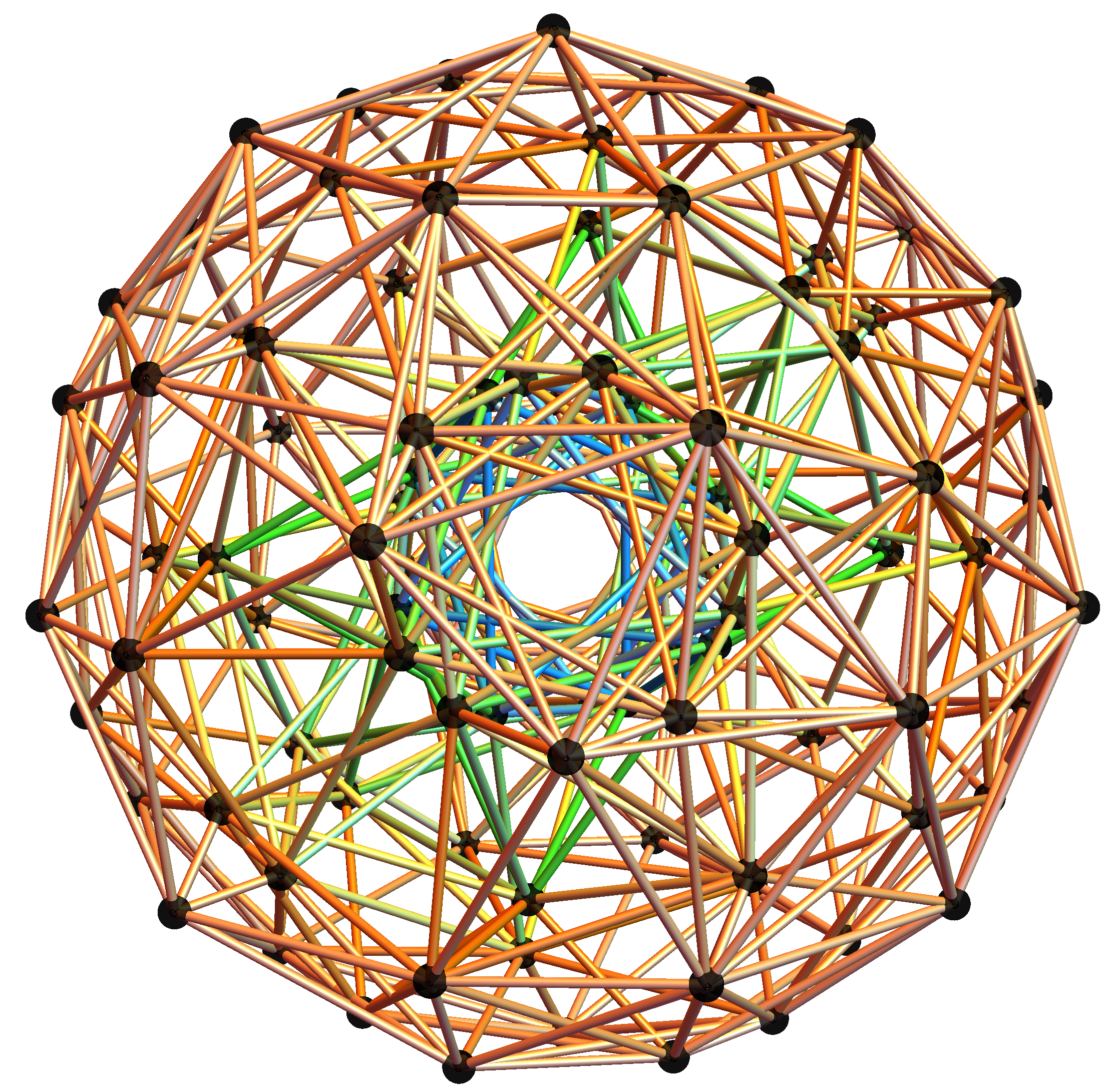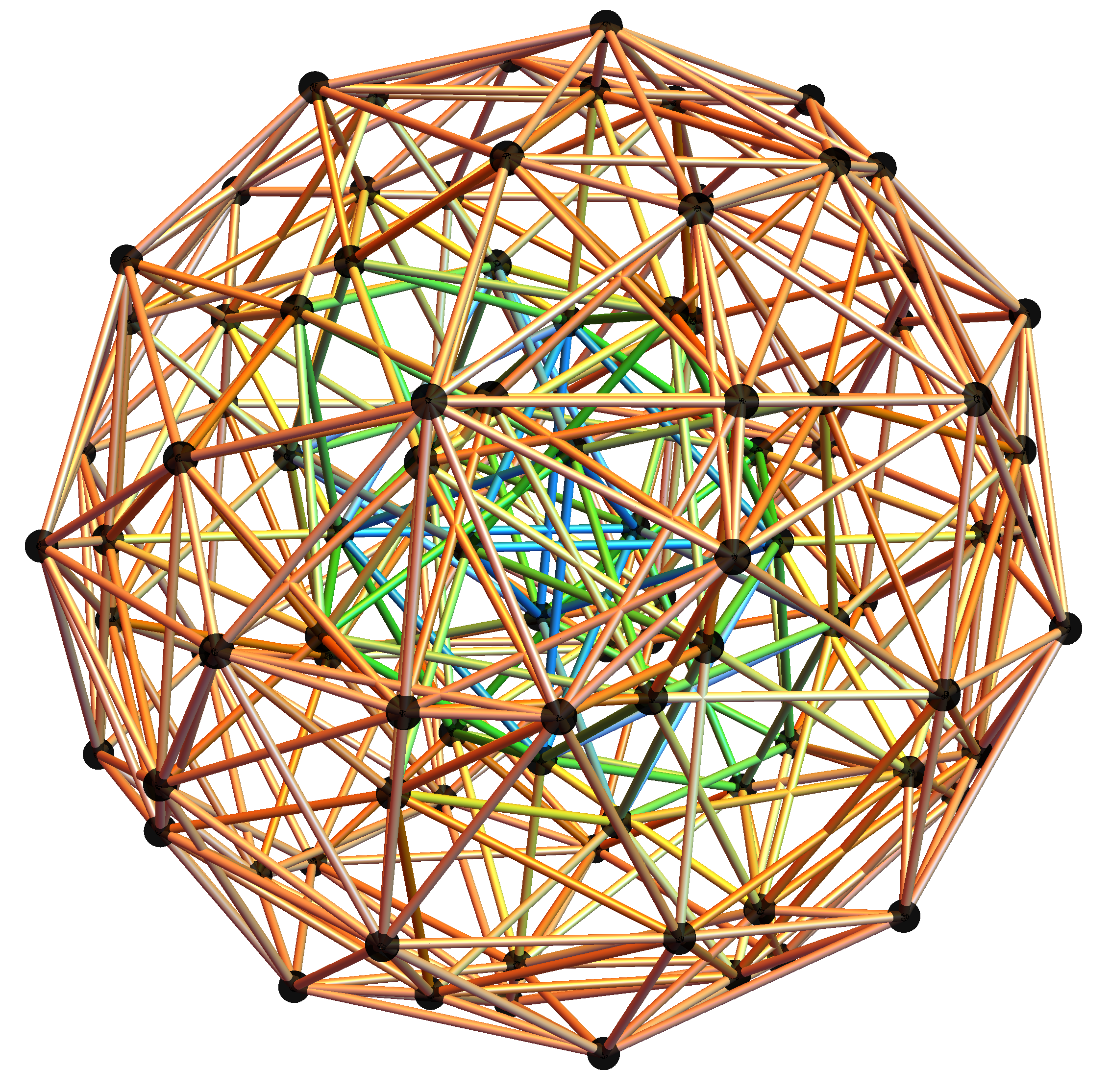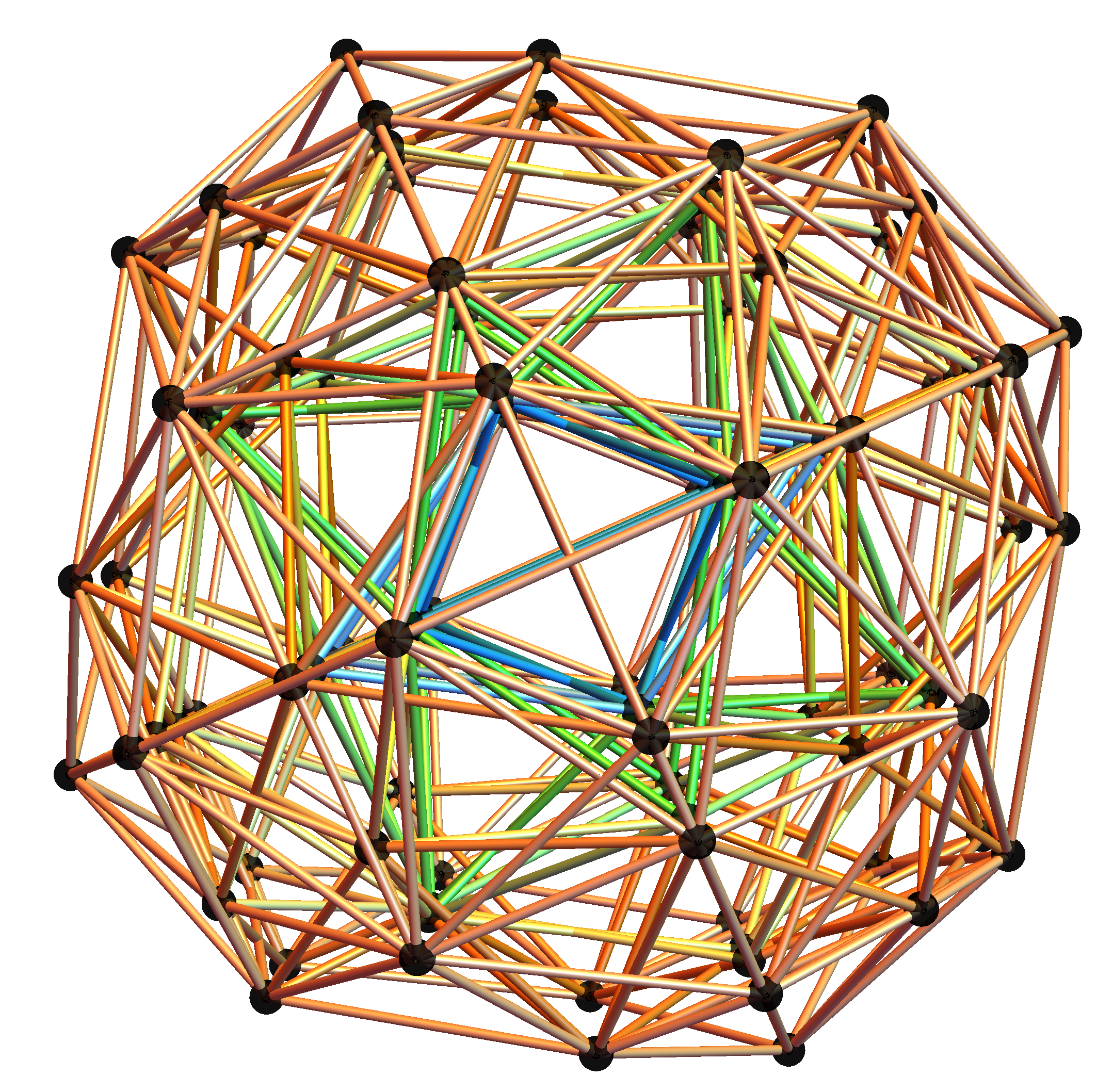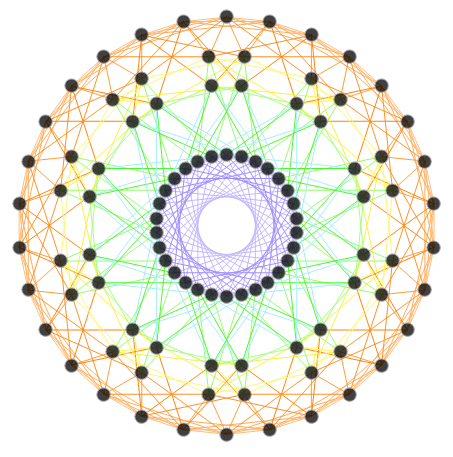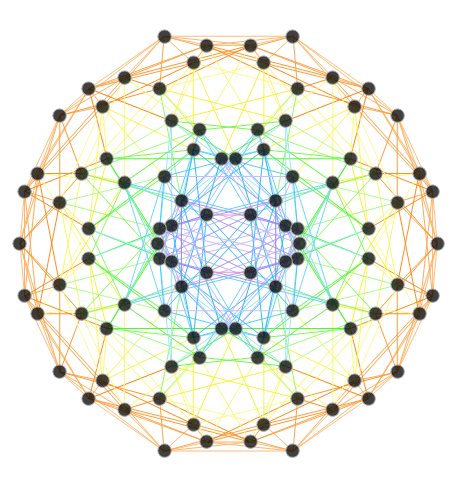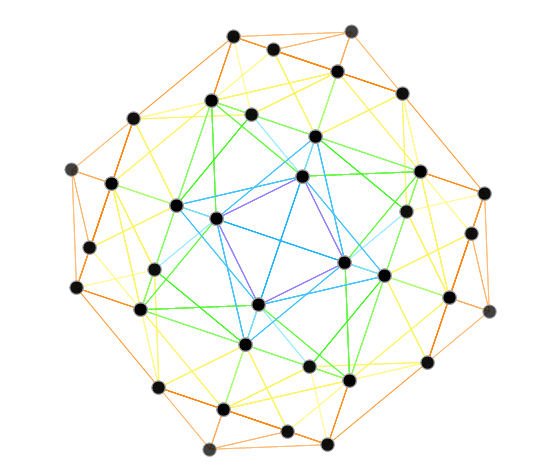Tag Archives: 3D
Universal Time’s Arrow as a Broken Symmetry of an 8D Crystallographic E8 folding to self dual H4+H4φ 4D QuasiCrystal spacetime
Animations of Wolfram’s Cellular Automaton rule 224 in a 3D version of Conway’s Game of Life.
While this does not yet incorporate the E8 folding to 4D H4+H4φ construct, the notion of applying it, as the title suggests, to a fundamental particle physics simulation of a “Quantum Computational Universe” or an emergent (non)crystallographic genetic DNA (aka. Life) is an interesting thought…
Watch a few notional movies, some in left-right stereo 3D. Best viewed in HD mode.
These are snapshots of all the different initial conditions on the rule 224. Each set of 25 has a different object style and/or color gradient selection.

Fun with Conway's "Game of Life" in 3D -> nD and Music
I’ve integrated a few more demonstrations, see below for descriptions and pics..
Conway’s “Game of Life” in 3D -> nD
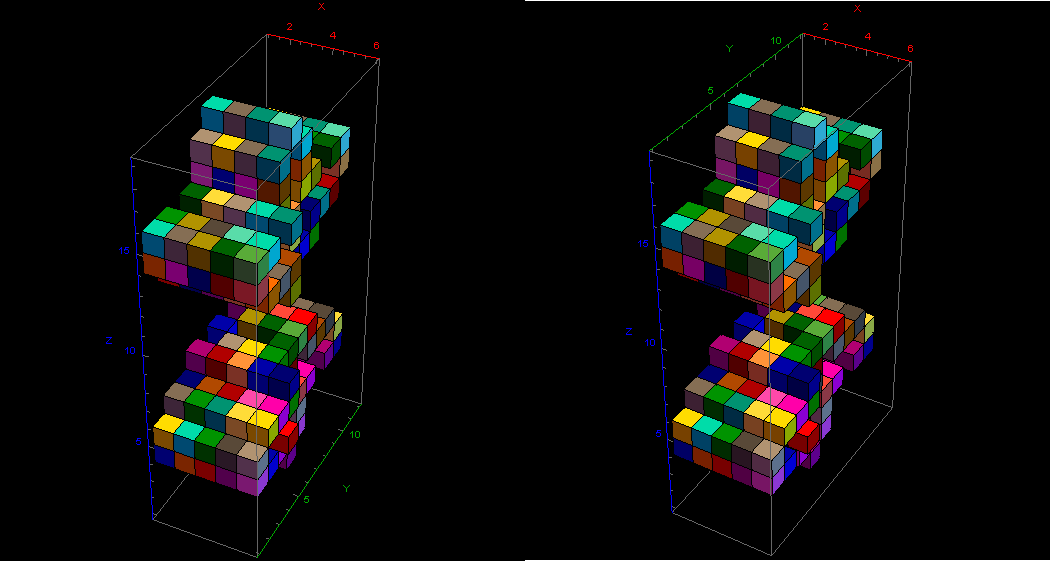
The #13 pane (Chords) will address the psychology of the mathematical beauty of music. The 2D pane presents Emmanuel Amiot and Fernand Brunschwig’s Pythagorean Meantone And Equal Temperament Musical Scales, while the 3D pane shows Drew Lesso’s 3D Lambdoma matrix.
The #14 pane (Gematria) will address Theological Number Theory in the form of Hebrew gematria, H4, and Tori. This sociology pane deals with the idea of Old Testament Hebrew and New Testament Koine Greek Gematria. The histogram shows the distribution of words used in the Bible according to their gematria value in Hebrew or Greek. Each word in each verse is selectable and shown in the distribution. Each word in the verse is colored by their value in Hebrew (if Old Testament), Greek and English.
Note: Hebrew is properly presented from right to left.
The #15 pane (QC) will address Quantum Computing in the context of MyToE. It uses several demonstrations… Qubits On The Poincare-Bloch Sphere, Quantum Logic Gates Roots Exponents And Eigensystems and Quantum Fourier Transform Circuit by Rudolf Muradian
The #16 pane (AI) will address Artificial Intelligence, an nD version of Conway’s “Game of Life” and Cellular Automata in the context of MyToE. It is an integration of Daniel de Souza Carvalho’s demonstration
A 3D projection of E8 (binary coordinates) to Pascal triangle related columns
This uses “binary” vertices of E8 (all 0’s or 1’s) from the Pascal triangle / Clifford algebra construction.
Notice the 8 excluded “generator” vertices are the axis 1-8, which show the projection orientation {X,Y,Z} vectorx. These sometimes are added to the 240 vertex “dimension count” of E8. There are a number of overlaps in the vertices in some columns, which are indicated by the color of the vertex.
Just for good measure, here is a 2D 16×16 matrix projection of the same “binary” E8 vertices. It shows the particle physics label with the E8 vertex number.
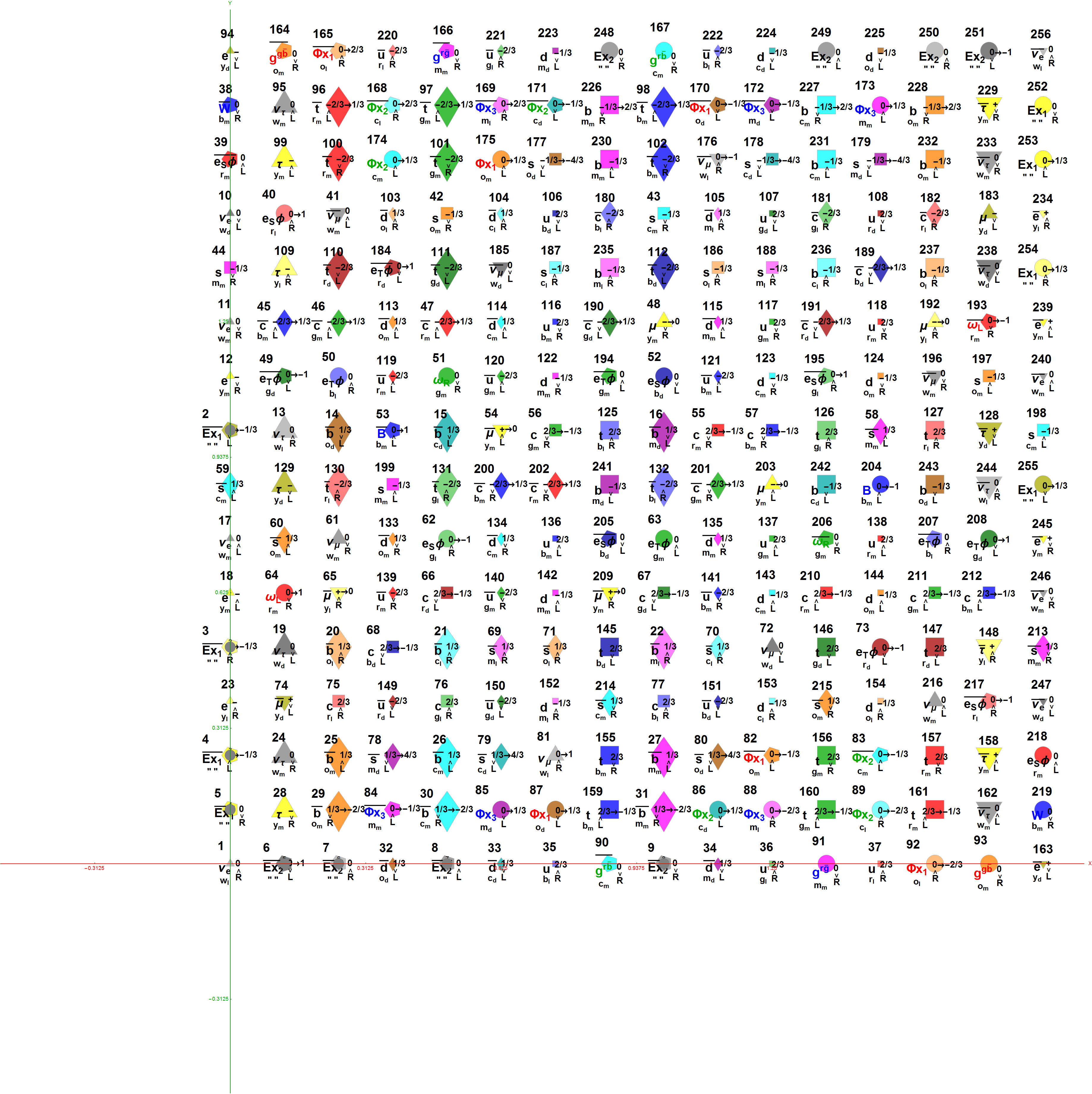
Playing around visualizing non-crystallographic DNA/RNA
I’ve got interaction between the DNA/RNA protein visualizations (e.g. “1F8V- PARIACOTO VIRUS REVEALS A DODECAHEDRAL CAGE OF DUPLEX RNA) with the VisibLie_E8 projections of crystallographic E8 to non-crystallographic H4 (and to dodecahedral H3 in 3 dimensions, of course).
These pics are a simple (naive) merge of the D6 projected using the E8 to H4 folding matrix and the Protein DB at http://www.rcsb.org/ for 1F8V).
3D particle interactions on H4 and H4φ 24-cell and snub-24-cells
Analyzing individual Fermi 4 particle "cell interactions" in 3D on Boerdijk–Coxeter helix rings
The Boerdijk–Coxeter helix is a 4D helix (of 3D tetrahedral cells) that makes up the vertices on 4 of the concentric rings of E8 Petrie projection (or the H4 and H4φ rings of the 2 600 cells in E8).
Outer (Ring 4) of H4 in 2D with non-physics vertices of all 8 rings of E8 in the background
Outer (Ring 4) of H4 in 3D with physics vertices
Ring 3 of H4 in 3D with physics vertices
Ring 2 of H4 in 3D with physics vertices
Inner (Ring 1) of H4φ in 3D with physics vertices
Combined 4 rings of H4 in 3D with physics vertices
Outer (Ring 4) of H4φ in 3D with physics vertices
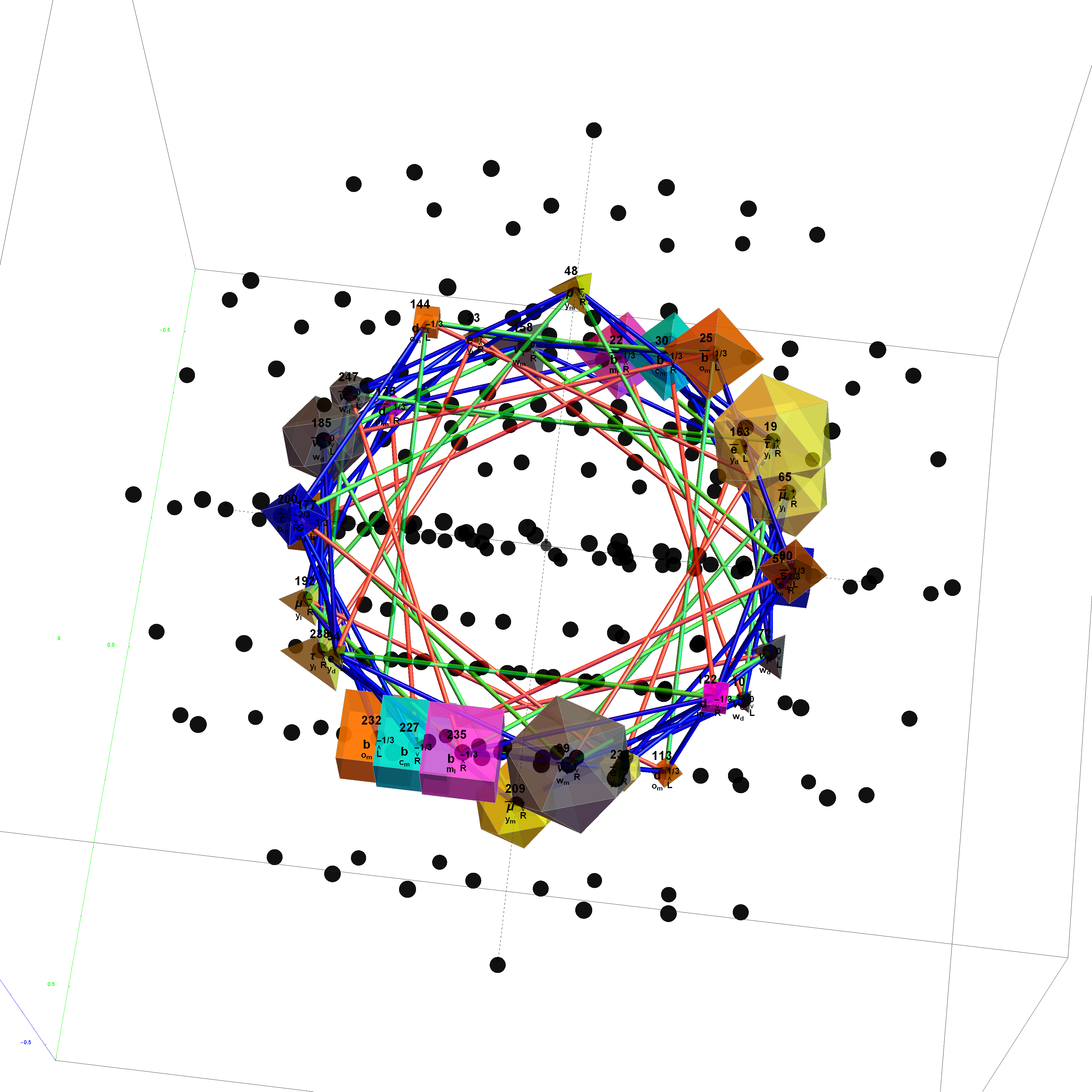
Ring 3 of H4φ in 3D with physics vertices
Ring 2 of H4φ in 3D with physics vertices
Inner (Ring 1) of H4φ in 3D with physics vertices
Combined 4 rings of H4φ in 3D with physics vertices
Combined 8 rings in 3D with physics vertices
Boerdijk–Coxeter helix
The Boerdijk–Coxeter helix is a 4D helix (of 3D tetrahedral cells) that makes up the vertices on 4 of the concentric rings of E8 Petrie projection (or the H4 and H4φ rings of the 2 600 cells in E8).
Outer (Ring 4) of H4 in 2D with non-physics vertices of all 8 rings of E8 in the background
Outer (Ring 4) of H4 in 3D with physics vertices
Ring 3 of H4 in 3D with physics vertices
Ring 2 of H4 in 3D with physics vertices
Inner (Ring 1) of H4φ in 3D with physics vertices
Combined 4 rings of H4 in 3D with physics vertices
Outer (Ring 4) of H4φ in 3D with physics vertices

Ring 3 of H4φ in 3D with physics vertices
Ring 2 of H4φ in 3D with physics vertices
Inner (Ring 1) of H4φ in 3D with physics vertices
Combined 4 rings of H4φ in 3D with physics vertices
Combined 8 rings in 3D with physics vertices
The Grand Antiprism
This Grand antiprism was created by projection of 100 of 120 600 cell vertices and 500 edges {488 of 1/2 (3-Sqrt[5]) and 12 of 2/(3+Sqrt[5])}. One face of this 3D projection contains the VanOss Petrie 30-gon projection. The removed vertices are from the inner rings of the 16-cell and their corresponding 4 Pi/5 rotations in the snub 24-cell.
The other two faces are shown, one of which is seen in the 2D orthonormal projection of H4.
D6 projected to 3D using the E8 to H4 Folding Matrix
This blogs.ams.org/visualinsight article is an American Mathematical Society post based on some of my work. I’ve made an animation of the D6 polytope with 60 vertices and 480 edges of 6D length Sqrt(2). It is similar to the one in the article by Greg Egan. This version was made from my VisibLie E8 demonstration software.
Best viewed in HD mode.
The process for making this using the .nb version of VisibLie E8 ToE demonstration:
1) Side menu selections:
- slide “inches” to 4 (lowers the px resolution)
- select “3D”
- set bckGrnd “b” (black)
- uncheck the shwAxes box
- check the physics box (to give it interesting vertex shapes/colors)
- change the fileExt to “.avi” and check the fileOut box (to save the .avi)
- check the artPrint box (to give it cylinder-like edges)
2) Go to the #9) HMI nD Human Interface pane:
2a) Top menu selections:
- set pScale to .08 (to increase the vertex shape sizes)
2b) Inside the pane selections:
- set “eRadius” to .01 (for thicker edge lines)
3) Go to the #2) Dynkin pane and interactively create (or select from the drop down menu) the D6 diagram.
BTW – this actually selects the subset of vertices from the E8 polytope that are in D6.
4) Go to the #3) E8 Lie Algebra pane:
4a) Top menu selections:
- E8->H4 projection
- check the edges box
- “spin” animation
- 30 animation “steps”
or simply upload this file or copy / paste the following into a file with extension of “.m” and select it from the “input file” button on the #9 HMI nD Human Interface pane.
(* This is an auto generated list from e8Flyer.nb *)
new :={
artPrint=True;
inches=4;
physics=True;
p3D=” 3D”;
bckGrnd=GrayLevel[0];
fileExt=”.avi”;
shwAxes=False;
scale=0.08;
selPrj=”E8->H4″;
lie=”D6″;
cylR=0.01;
showEdges=True;
steps=30;
pthRot=”Spin”;
selPrj=”E8->H4″;
p3D=” 3D”;
};new;
In the next version I will just make this another “MetaFavorite”, so it will be in the dropdown menu in all versions.
Enjoy!
